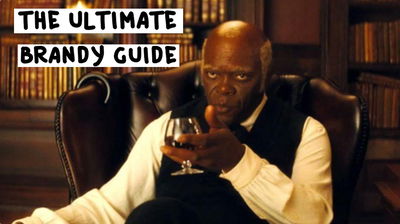
The Ultimate Brandy Guide: Everything You Need to Know
WELCOME TO BRANDY
Friends, Romans, exceptional home bartenders, lend us your ears! We're about to up your classy drink game with one of the fanciest spirits out there: Yes, people, we're about to learn all about brandy. You know, that liquor that rich people like Frasier and P. Diddy drink. Seriously though, this after-dinner digestif distilled from wine or fermented fruit juice is, despite its reputation as an elitist spirit, surprisingly accommodating in terms of cost, taste, and mix-ability, and you'll definitely want to have a bottle or two in your home bar if you want to be a fully prepared drink maker. https://giphy.com/embed/5oAQEWzBCR8RO In the following Ultimate Brandy Guide, we're going to learn everything about brandy, including how brandy is made, the history of brandy, how to drink brandy, and just about everything else surrounding this "burnt wine" beverage — including why we just called it a "burnt wine." Once you have all of the brandy information in this in-depth tutorial committed to memory, we guarantee that you'll be able to move amongst any high-class drinking crowd like the confident connoisseur that you were born to be. So sit back, grab a glass of Remy Martin or Hennessy and prepare to learn more about brandy than you ever have before. https://giphy.com/embed/MQ0VrHK5lOeUoWHAT IS BRANDY?
As always, the first thing we need to know about brandy is... what exactly is it? According to Wikipedia's definition, "Brandy is a spirit produced by distilling wine... [which] generally contains 35–60% alcohol by volume (70–120 US proof) and is typically drunk as an after-dinner digestif." The Wiki goes on to add that "Some brandies are aged in wooden casks, others are coloured with caramel colouring to imitate the effect of aging, and some are produced using a combination of both aging and colouring." What does this mean? Basically it means that if you want to make some brandy, you're going to need to grab some wine (or other fermented fruits; just need a fruit juice with fermentable sugars) and then distill the heck out of it to up its alcohol by volume (ABV) from around 12% to something in the realm of 35-60%. But there's a bit more nuance to brandy than just the distillation of wine or other fermentable fruit juices; brandies are also often barrel aged, and there are tons of regional variations as well — them grapes vary in taste and quality depending on where they're grown, right?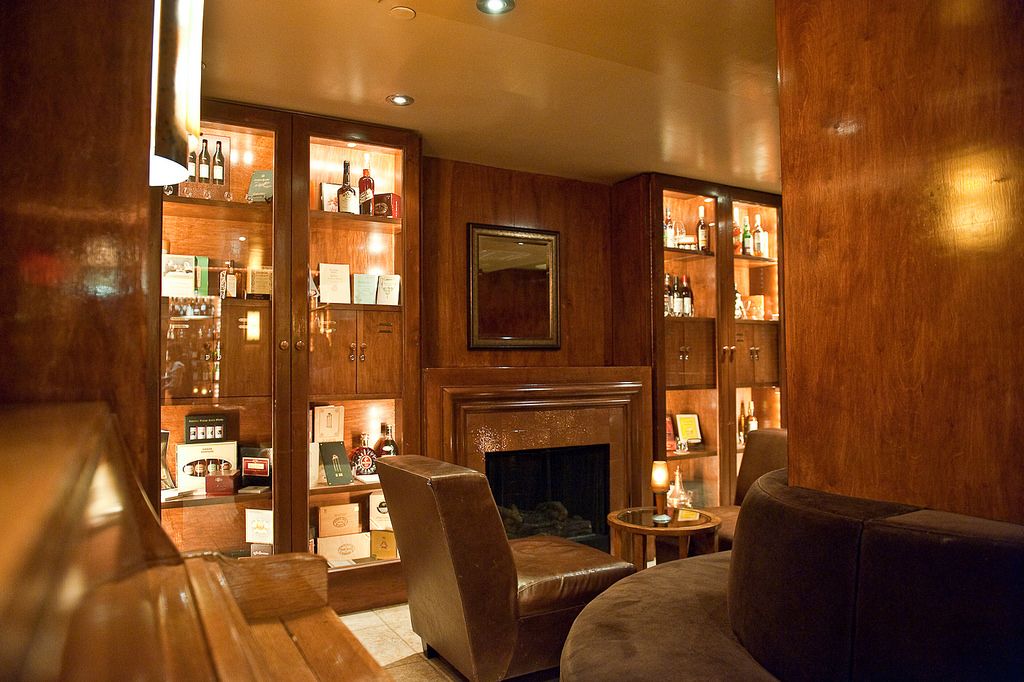
The type of place you probably think of when you think about sipping on some brandy. Image: Flickr / Jazz Guy
But if you want to pass as somebody who knows about at least the tip of the brandy iceberg (the brandy 'berg), then you'll also want to know that the word "brandy" is a shortening of the word brandywine, which is ultimately derived from the word gebrande wijn, which literally means "burned wine." That doesn't mean that you set wine on fire to make brandy though; again, we're talking about just distilling wine. Although that does require sticking it in a still, which will be lit on fire from the outside. In terms of the broad strokes of Brandy's history — we'll go deeper into this later but this is just a few sentence crash course so if it comes up at a party or something you have some go-to info to blow people's minds — you'll want to know that it was originally born from necessity (of course). In this case, that necessity was the ability to preserve wine in order to make it easier for merchant sailors to transport. This transportation of wine didn't only lead to the distillation of the wine before being transported (which affected its taste 'cause the stills destroyed some flavor compounds while forming others) however — it also led to the distilled wine being aged in barrels ('cause that's how you transported booze in those days). This, of course, affected the flavor of the distillate, compounding the changes in flavor caused by the stills.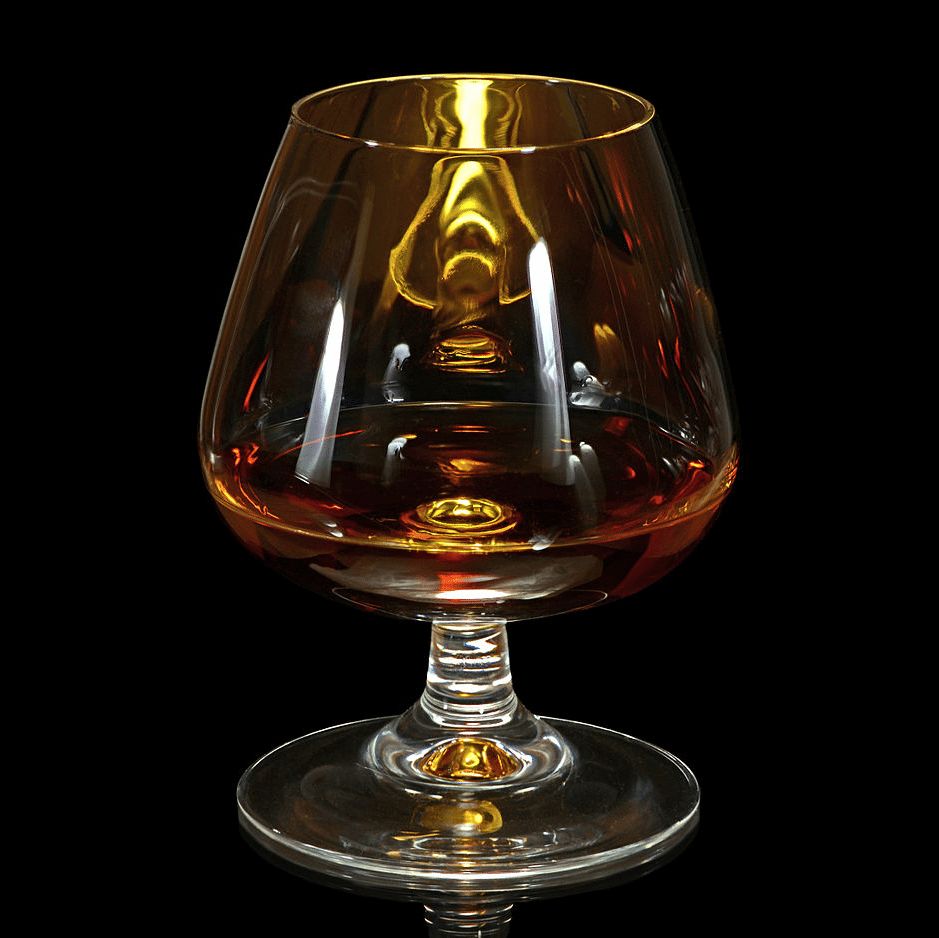
Cognac in a snifter. Image: Wikimedia / Didier Descouens
You'll also want to know that Cognac is not separate from brandy, but rather a type of brandy that comes from Cognac, France. And while it's a requirement for brandy to be aged, other types of brandy do not have to be aged — so no, we're not talking about a whiskey kind of deal here where nearly every variation needs to be aged. (Do note, however, that there are other types of brandy, including Armagnac, American brandy, etc., but we'll get into that more below.) As far as the broad strokes are concerned, that's basically it. But as with all the other spirits, there's plenty of nuance to explore, so let's jump right in and talk about some brandy history.A (VERY) BRIEF BRANDY HISTORY
16th CENTURY DUTCH SAILORS AND BRANDY'S ACCIDENTAL BIRTH Alright, so let's cover the origin of this spirit so we can understand where it comes from, why it tastes the way it does, and how it has influenced the people all across the globe. According to the awesome writeup on Brandy's history put together by Finger Lakes Distilling, the origin of brandy can be traced back to the 16th century when Dutch wine merchants started removing water from wine in order to allow more of it to be stored in limited cargo space, as well as to avoid a portion of the taxes levied on the wine. (The true origins of brandy go a bit further back to the 13th century when distilled wine was used as a medicine, but for all intents and purposes, we can start the history of brandy in the 16th century.)
Dutch ships (red, white, and blue flags) from the second Anglo-Dutch War. Note that this painting is from the 17th century, not the 16th. Image: Wikimedia / Public Domain
Anyway, as mentioned, the Dutch called this distilled wine "burnt wine," which, again, was originally derived from the word gebrande wijn (the Dutch actually called the burnt wine "brandewijn" in the 16th century, but that word was still derived from gebrande wijn). The reason for the new word was because even though the Dutch sailors believed they had simply found a clever trick for condensing wine and avoiding taxes, when they opened the wine barrels, they discovered that it wasn't wine at all — its color, aroma, and taste had all been altered, making it a completely new spirit. Now with brandy's origin story in mind, let's move onto how brandy became a staple spirit in the U.S. BRANDY IN THE U.S. Brandy has a long and storied history in the U.S., one just as rich and extensive as rum or even whiskey. In fact, brandy bloomed on both coasts of the U.S. as settlers from Europe first began to build up their colonies (and do a bunch of other sad things to the native peoples that we won't discuss in this fun little brandy writeup). As the Copper & Kings A History of American Brandy. A History of Brandy in America paper notes, "It is believed that the very first American Brandy was distilled on Staten Island in 1640 by Cornelius Toun [and] was very likely an apple brandy. This was eight years before Emmanuel Downing is believed to have distilled the first Rye Whiskey in Salem, and well over a century before the first documented Bourbon." Yes, that means that brandy has a longer history as a U.S. spirit than Bourbon. Can you handle that truth, Bourbon lovers?! While the first brandy was distilled on Staten Island in 1640, grape brandy in the U.S. is traced to the 1700s, when Spanish missions in California started making the stuff. From then on, California would go on to become one of the world's most prominent producers of brandy, with a climate that was ideally suited for vineyards.
Grape vineyards used, in part, for producing brandy. (Not located in California.) Image: Flickr / Jinx McCombs
Over the next few centuries, brandy would become a major industry in the U.S., with the newly established North American country exporting a significant amount of the liquor to Europe. Even through the Civil War brandy production continued to increase, led by a bevy of small, independent distilleries. (Brandies were also imported from France, which has, throughout history, been considered the source of the finest varietals on Earth.) In the early 20th century, Prohibition had the same effect on brandy as it did on all of the other alcoholic spirits being produced at the time — that is to say, it crippled the American industry and almost completely crushed it. Luckily, brandy, like all the other spirits, was able to stay alive thanks to its being prescribed as a medication, as well as its use in baked goods and other foods. After the end of the Prohibition period, the brandy industry came roaring back to life, although now it was more tightly regulated in California by new state laws. A grape-prorate law was established in 1938 that required producers of grape-based brandies to distill at least 45% of their crops and age it for two years. In 1941, state law put a cap of 85% ABV on distilled brandy, which, combined with the aging requirements, made the brandy production process very similar to that of Bourbon.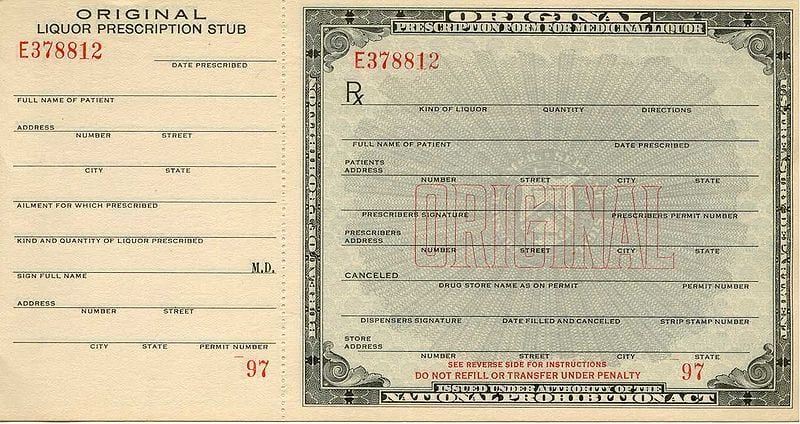
A Prohibition-era prescription for liquor, sometimes used for prescribing brandy. Image: Wikimedia / Creative Commons
Despite the new regulations — which caused many of the small distilleries to go out of business — the brandy industry continued to boom over the following decades, with brandy consumption increasing by 400% by the 1960s. (Around 75% of that new, significantly expanded market was made in California.) Just a couple of decades later, in the 1980s, brandy underwent what could be considered a "renaissance" with craft distilleries popping up en masse once again, focusing on the art of making fine brandies. A few decades after that, in the first decade of the 21st century, industry laws changed in order to allow craft distilleries to really flourish. These craft distilleries began to become profitable on the small scale, and by 2011, over 30 distilleries began to produce various fruit brandies. Now, in the second decade of the 21st century, the future of the brandy market is looking brighter than ever. A 2017 Forbes article titled "How Brandy Could Become The Next Big Thing In The Spirits World" noted that the brandy market grew by a whopping 27.8% between 2005 and 2015, with an eye-popping 226.9% growth in the super-premium subcategory. https://giphy.com/embed/xT5LMqCKPKmeyxPjRC Prominent beverage specialist, Kelvin Uffre, told Forbes that "'Brandy is absolutely a misunderstood spirits category, with the exception of the large Cognac producers, [and] consumers are just now discovering different styles of Brandy like Armagnac, Brandy de Jerez and Pommace styles as well.'" He also noted that the rise in popularity of whiskey and cocktail consumption has helped to aid in the growth of the U.S. brandy market.HOW BRANDY IS MADE
Alright, now that we know exactly what brandy is as well as the broad strokes of its history, it's time to jump into how this beautiful, fruity spirit is actually made. And despite the finished spirit's often complex flavor profile and fancy reputation, the brandy making process is surprisingly simple. In fact, it can be boiled down to the following five steps: CREATING THE MASH / FERMENTATION The first thing you'll need to do in order to make brandy is collect your raw, base ingredients. As mentioned previously, these base ingredients include anything from wine produced from grapes to whole fruits to fruit juices — any fruit-based sugars that can be fermented — and either smash it all up (as in the case of whole fruits), or begin the distillation process (as in the case of already fermented fruit-based wine). For the sake of simplicity, let's say that you want to make your brandy from apples.
Fermentation of plums, one of the many fruits that can be used as base for brandy. Image: Flickr / brankomaster
For this step, what you need to do is go out to your rows and rows of apple trees, collect a bunch of apples, and bring them back to your distillery. Once you've done that, you'll need to stick all your apples and some distilled water into a giant bin so you can mash them all up. The reason for doing this is so you can release all the fermentable sugars from your apples. And why would you want to do that? So you can combine the fermentable sugars with yeast and create... alcohol! The yeast (single-celled organisms) that you add to your apple mash is going to eat all those fermentable sugars and produce ethanol — a.k.a. alcohol that can get you tipsy — as well as other byproducts such as flavor compounds and CO2. The resulting ethanol-containing liquid could potentially be turned into wine or beer (with a few subsequent processing steps, of course), but for making brandy, this roughly 10% ABV mix just won't do. You'll need to way up that ABV to anywhere from 35-60%. And there's only one way to do that: by distilling it. DISTILLATION Distillation is crucial for creating brandy because this is the point at which the alcohol is concentrated and your flavor compounds are adjusted — with some being destroyed during the distillation process and others being created. In terms of the actual distillation process, that, of course, depends on the distillery. As Wikipedia notes, "Brandy is usually produced in pot stills (batch distillation), but the column still can also be used for continuous distillation. Distillate obtained in this manner has a higher alcohol concentration (approximately 90% ABV) and is less aromatic. Choice of the apparatus depends on the style of brandy produced. Cognac and South African brandy are examples of brandy produced in batches while many American brandies use fractional distillation in column stills." The distillation process, in general, is pretty simple: What you’ll need to do is take your fermented fruit juices (in the case of this example, fermented apple juice), place it in the bellies of stills — a still is basically a very large copper pot with a long neck — so that the ethanol and the water in the fermented liquid can be separated. This happens by lighting a fire underneath the belly of the still, which sends the ethanol racing up the long necks of the stills, where it’s collected from openings at the other end of the long necks. The reason that mostly ethanol vapor races up the necks of the stills and most of the water stays in the bottoms is because of the differing boiling points of the two liquids — ethanol has a lower point of 173.1 degrees Fahrenheit, while water has a boiling point of 212 degrees Fahrenheit. This distillation process is then usually repeated in order to up the ABV even further.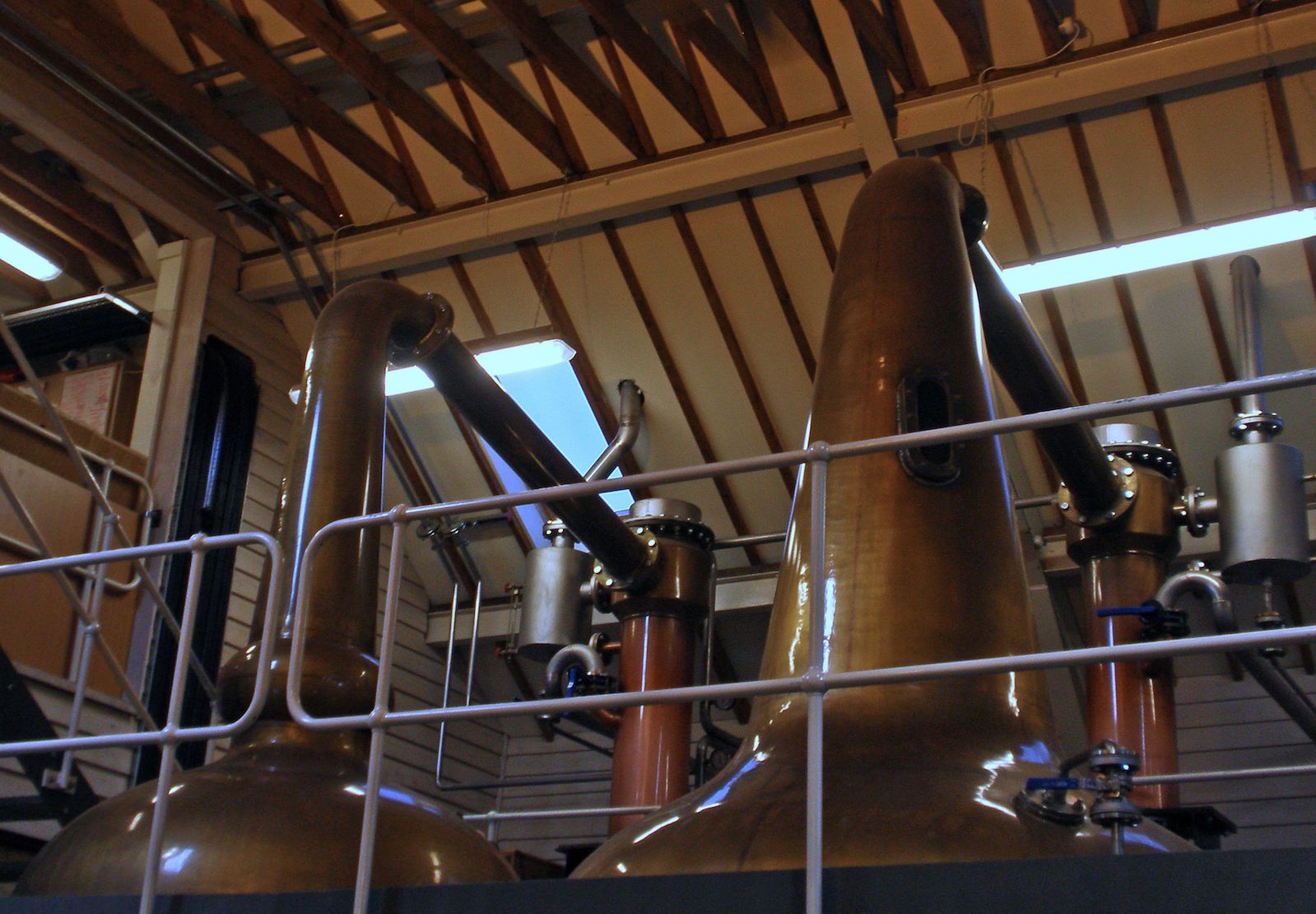
The tops of pot stills (including the lyne arms). Image: Flickr / Amanda Slater
Now, your pot still is going to provide different flavors than your column stills, but regardless of the method you use, the result will be a liquid with an ABV of something on the order of 72-96.5%. (72% would be the max ABV allowed in France for their Cognac, whereas 96.5% would be something you may find with mass-produced brandies that are of lesser quality.) Side note: The type of still used to distill the base alcohol will affect the flavor because of the interaction between the alcohol and the still in which it's heated. For example, copper often strips most of the sulfur from the distillate, which can cause fowl tastes and aromas to arise (think rotten egg smell...). BARREL AGING Once you have your distilled alcohol — now containing somewhere between 72-96.5% ABV — it's time to put it in some barrels for at least a couple of years. (In most cases, that is, in some cases brandies aren't aged). As Wikipedia notes, "After distillation, the unaged brandy is placed into oak barrels to mature. Usually, brandies with a natural golden or brown colour are aged in oak casks (single-barrel aging). Some brandies, particularly those from Spain, are aged using the solera system, where the producer changes the barrel each year." In terms of exactly how long various brandies will stay in the barrel, that will depend on the type of brandy being made. In general, as Made How notes, "Most brandy consumed today, even fine brandy, is less than six years old. However, some fine brandies are more than 50 years old. As the brandy ages, it absorbs flavors from the oak while its own structure softens, becoming less astringent. Through evaporation, brandy will lose about 1% of its alcohol per year for the first 50 years or so it is 'on oak.'"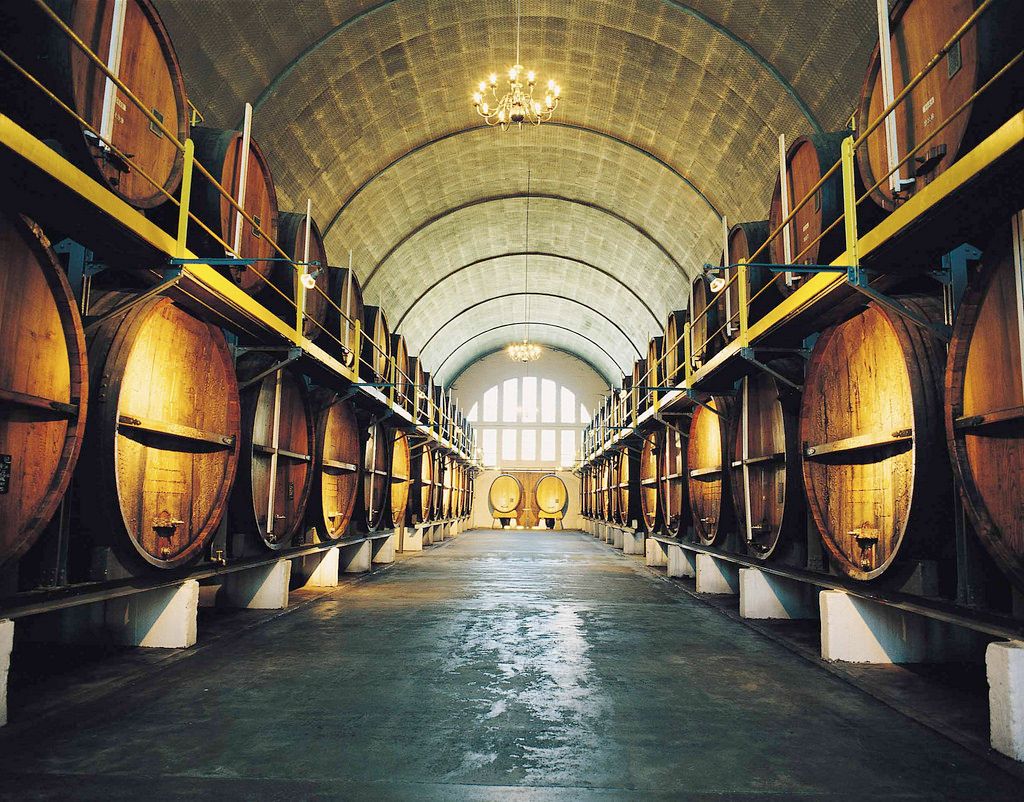
South African brandy barrels. Image: Flickr / South African Tourism
Flavor and color compounds from the barrels will be absorbed into the brandy over time thanks to the fact that ethanol is extraordinarily good solvent. This means that the ethanol will basically munch off flavor and color compounds from the wood — which include everything from vanillins to tannins to lactones — and deposit it into the liquid inside of the barrel (which is sometimes referred to as a "cask"). Side note: Different countries have different regulations for brandy barrel aging. For example, Brandy & Ginger notes that "In South Africa brandy regulations require that this spirit is matured for at least 3 years in Oak barrels in order to be classified as brandy. The barrels used are also toasted inside using an open flame to further allow transfer of flavour and character to the spirit aging inside them." U.S. regulations for grape brandy, on the other hand, state that "[Brandy] derived from grapes, shall be designated as 'grape brandy' or 'brandy', except that in the case of brandy (other than neutral brandy, pomace brandy, marc brandy, grappa brandy, Pisco, Pisco Perú, or Pisco Chileno) distilled from the fermented juice, mash, or wine of grapes, or the residue thereof, which has been stored in oak containers for less than 2 years...." BLENDING BRANDIES Once you've barrel aged your brandy for (in most cases) at least a few years, it then becomes time to blend your brandies. Possibly. It's not essential. If the brandy is blended — and it probably will be — it won't necessarily be an easy process. In fact, it may be one of the most complicated steps involved in the brandy making process. As Brandy & Ginger notes in the same article mentioned above:"Once the brandy has finished its maturation, the master distiller will select different brandies form different barrels and work out each of their individual characteristics. Then, depending on the final style of brandy they wish to make, each will be blended meticulously over and over again until the right balance of nose and flavour are reached, critically ensuring that what is promised on the nose is followed through to on the palate."Ultimately, blending brandies is going to depend on what flavor the master distiller is going for. This will be achieved based exclusively on the master distiller's nose and palate — something that seems incredibly anachronistic in the age of digital machines and supercomputers, but still cool, nonetheless, right? DILUTION AND BOTTLING Once you have your brandy that's been barrel aged and blended, now is the time to dilute it with distilled water and then bottle it! In terms of dilution with water, that happens because the brandy pulled out of the casks is still a ridiculously high ABV — remember it's something around 72-96.5% — so it needs to be brought down to more reasonable 30-60%. Once the brandy has been brought down to its bottling strength it's time to... bottle it! In terms of the bottling process, that's more or less as simple as taking the blended, aged brandy and squirting it into glass battles. Once this has happened, the brandy is ready to be shipped, sold, and drunk. Although there are still the labels on these brandy bottles to think about, but you'll learn how to read in the next section.
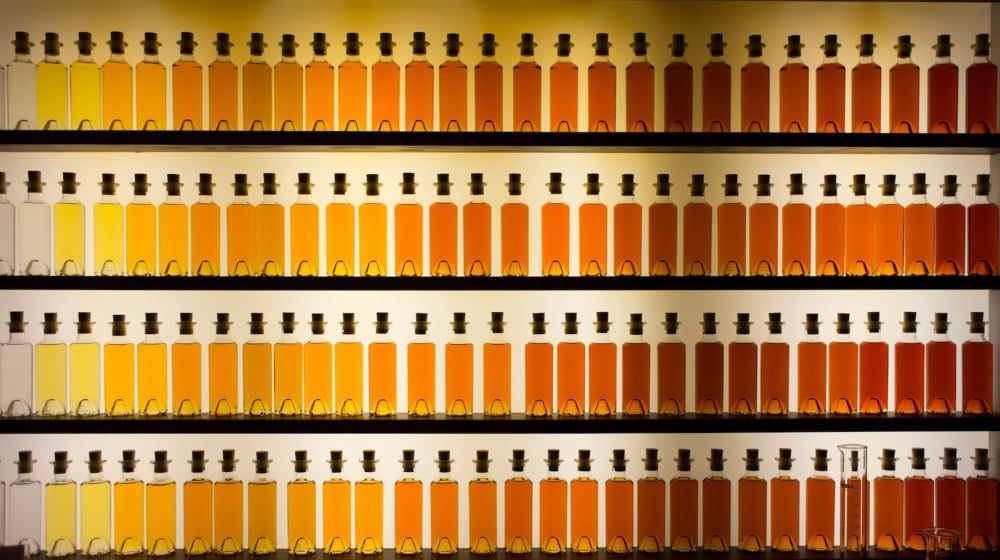
All the different colors of Cognac. Image: Flickr / Grey World
THE DIFFERENT TYPES OF BRANDY
Now that we know what brandy is and how it's made, we can talk about all of the different types that you're likely to see on store shelves. And while there's definitely more than a handful of terms here you'll need to know in order to identify the brandy bottle you may be holding ( or drinking with your at-home patrons?), don't stress: Almost all of these labels are just about how old a particular bottle of brandy is. Although they do get really old. REGULAR BRANDY VERSUS POMACE BRANDY Before getting to all of the other terms you're going to come across on your quest for the best brandy, you'll want to know what the category of "pomace" brandy is all about. Pomace is basically all of the grape junk that's left over after you've pressed the grapes for their juice. This "junk" includes skin, pulp, seeds, stems and fruit, and is used to make pomace brandy — as well as other wine variants such as rosé.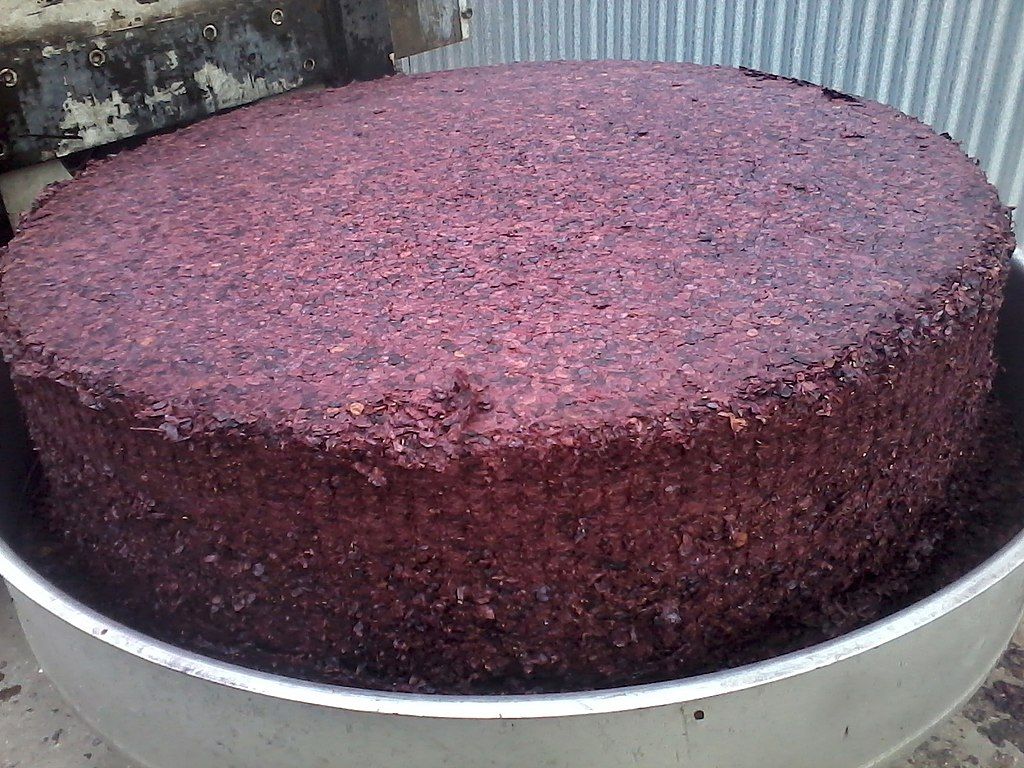
A gigantic cake of pomace. Image: Wikimedia / Olivier Colas
In terms of how pomace brandy is made, it's basically the same process as regular brandy, except you're starting out by fermenting the pomace. Also, pomace brandies are, unlike regular brandy, often not aged, and thusly clear. As a side note, there are three ways to ferment pomace brandy: fermented, semi-fermented, and unfermented. Fermented pomace is left to ferment as a must (the mashed grape junk plus the fruit juice crushed out of them), semi-fermented pomace is pomace that's removed before fermentation is complete, and unfermented pomace is not fermented at all. Usually it's only fermented pomace that's used for brandy. COGNAC Cognac is brandy that has been made in Cognac, France. If your brandy is made anywhere but Cognac, it ain't Cognac. It's basically the same deal as tequila only being tequila if it's produced in certain parts of Mexico. There are numerous restrictions placed on Cognac by French regulations, which are briefly described in the following excerpt from the Cognac wiki:"Cognac production falls under French Appellation d'origine contrôlée designation, with production methods and naming required to meet certain legal requirements. Among the specified grapes Ugni blanc, known locally as Saint-Emilion, is most widely used. The brandy must be twice distilled in copper pot stills and aged at least two years in French oak barrels from Limousin or Tronçais. Cognac matures in the same way as whiskies and wine barrel age, and most cognacs spend considerably longer "on the wood" than the minimum legal requirement."So if you hear Cognac, don't stress about how fancy it sounds: It just means that it was made in a specific part of France, with specific types of grapes, and aged for a specific number years. (Which all sounds pretty fancy, actually.) In terms of how Cognac is labeled, we'll get to that in the below section.
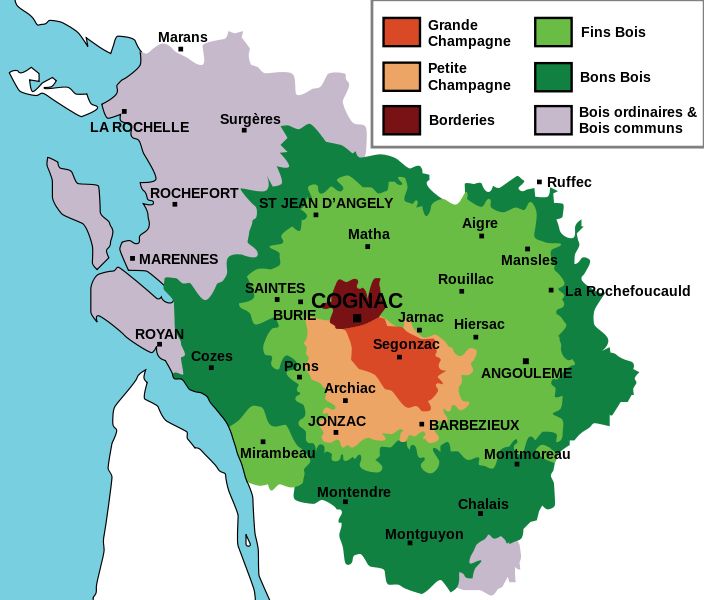
The Cognac region of France — the only region on Earth that can produce Cognac. Image: Wikimedia / Bilz0r
Some of the best Cognacs include: Gautier Cognac VSOP ($40), Rémy Martin 1738 Accord Royal ($50), Camus Borderies Cognac VSOP ($55), and Hennessy Privilege VSOP Cognac ($65). ARMAGNAC Armagnac is another type of brandy that can only be produced in France. Which region? You guessed it: Armagnac. Armagnac is made by blending two grape types — Colombard and Ugni Blanc — and is distilled once in a column still. As with Cognac, Armagnac is subject to numerous labeling regulations by the French government, which dictate the same types of parameters as those applied to Cognac.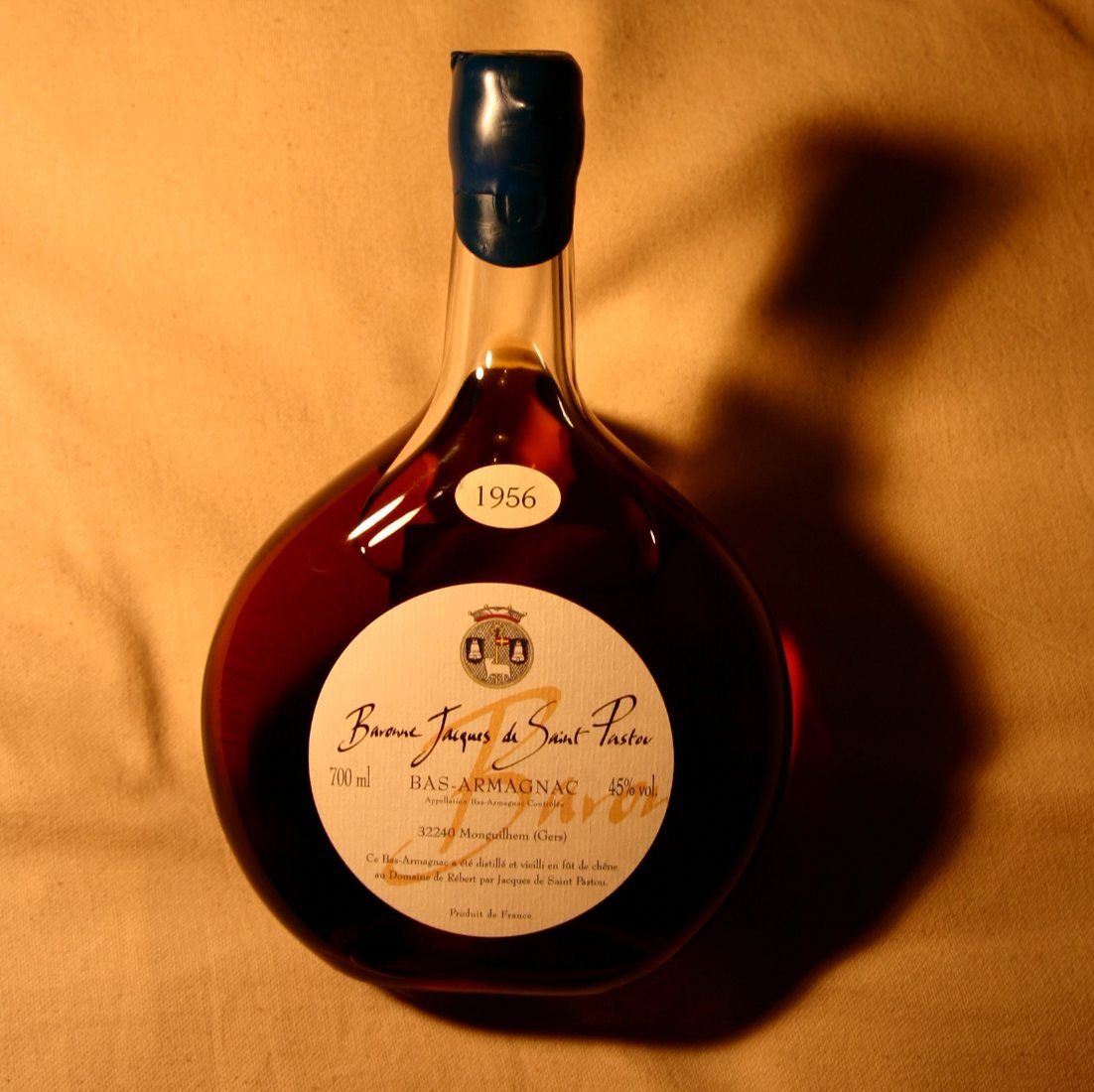
A bottle of fine Armagnac. Image: Wikimedia / Rama
In terms of how Armagnac differs from Cognac, the Armagnac wiki notes that "Armagnac is traditionally distilled once, resulting in 52% [ABV]. This results in a more fragrant and flavorful spirit than Cognac, where double distillation takes place. Long ageing in oak barrels [also] softens the taste and causes the development of more complex flavours and a brown colour." Some of the best Armagnacs include: Delord Armagnac 25 YR ($75), Chabot VS Armagnac ($32), Chateau de Laubade Armagnac ($40), Chateau de Laubade Intemporel N5 Armagnac ($130), Chabot XO Armagnac ($80). AMERICAN BRANDY American brandy is brandy that's made in Japan. Just kidding! American brandy is, of course, made in the U.S., and usually comes from California or Oregon. (Some other areas also produce brandy, but those are the two major places of production.)
A bottle of American brandy. Image: Flickr / Paul Sableman
American brandy offers similar flavor experience to Cognac, although because there are less restrictions on the types of grapes that can be used, it tends to offer a wider range of tastes. American brandy also tends to be cheaper than Cognac, but is considered by some to be less refined. Also, like Cognac and Armagnac, American brandy is aged in oak barrels. Some of the best American brandies include: Osocalis Rare Alembic Brandy ($45), Cedar Ridge Apple Brandy ($47), Germain-Robin Coast Road Reserve ($81), Korbel 12 Year Old California Brandy ($22), and Laird's Rare 12 Year Old Apple Brandy ($82). BRANDY DE JEREZ Brandy de Jerez is brandy that can only be produced in the Jerez area of Andalusia, Spain. (Are you sensing a pattern here between brandy name and location?) Brandy de Jerez is distinctive as it's made in much the same way as sherry — a fortified wine made from white grapes that are exclusively grown in Spain. Like Cognac and Armagnac, Brandy de Jerez is also subject to strict regulations by its country's government, which sets the standards for everything from what base grapes it's made from to how long it needs to be aged in American oak barrels. The three ways classifying the age of a particular Brandy de Jerez are: 1. Solera - This type of Brandy de Jerez is aged for roughly one year and tends to have a relatively light and fruity taste. 2. Solera Reserva - This type of Brandy de Jerez is aged for three years and offers a more oaky flavor profile. 3. Solera Gran Reserva - This type of Brandy de Jerez is aged for at least ten years and usually has a flavor profile accented with dried fruits, roasted nuts, and strong hints of oak.
Bottles of Brandy de Jerez. Image: Wikimedia / El Pantera
Some of the best Brandy de Jerez bottles include: Gran Duque d'Alba Brandy Solera Gran Reserva ($54), Lepanto Brandy de Jerez / Solera Gran Reserva ($53), Gran Duque de Alba Solera Reserva Brandy - 750 ml bottle ($113), Magno Brandy de Jerez Solera Reserv ($24), and Carlos I Imperial XO Gran Reserva Brandy ($69). CALVADOS Calvados is a brandy that's made from apples and produced in the Normandy region of France. According to government regulation, Calvados distillate must be aged in oak barrels for at least two years. Some of the best Calvados bottles include: Menorval Prestige Calvados ($34), Pierre Huet Tradition Calvados ($80), Christian Drouin Reserve des Fiefs Calvados / Pays d'Auge ($58), Calvados Boulard V.S.O.P. ($47), and Pierre Huet Vieux Calvados ($45).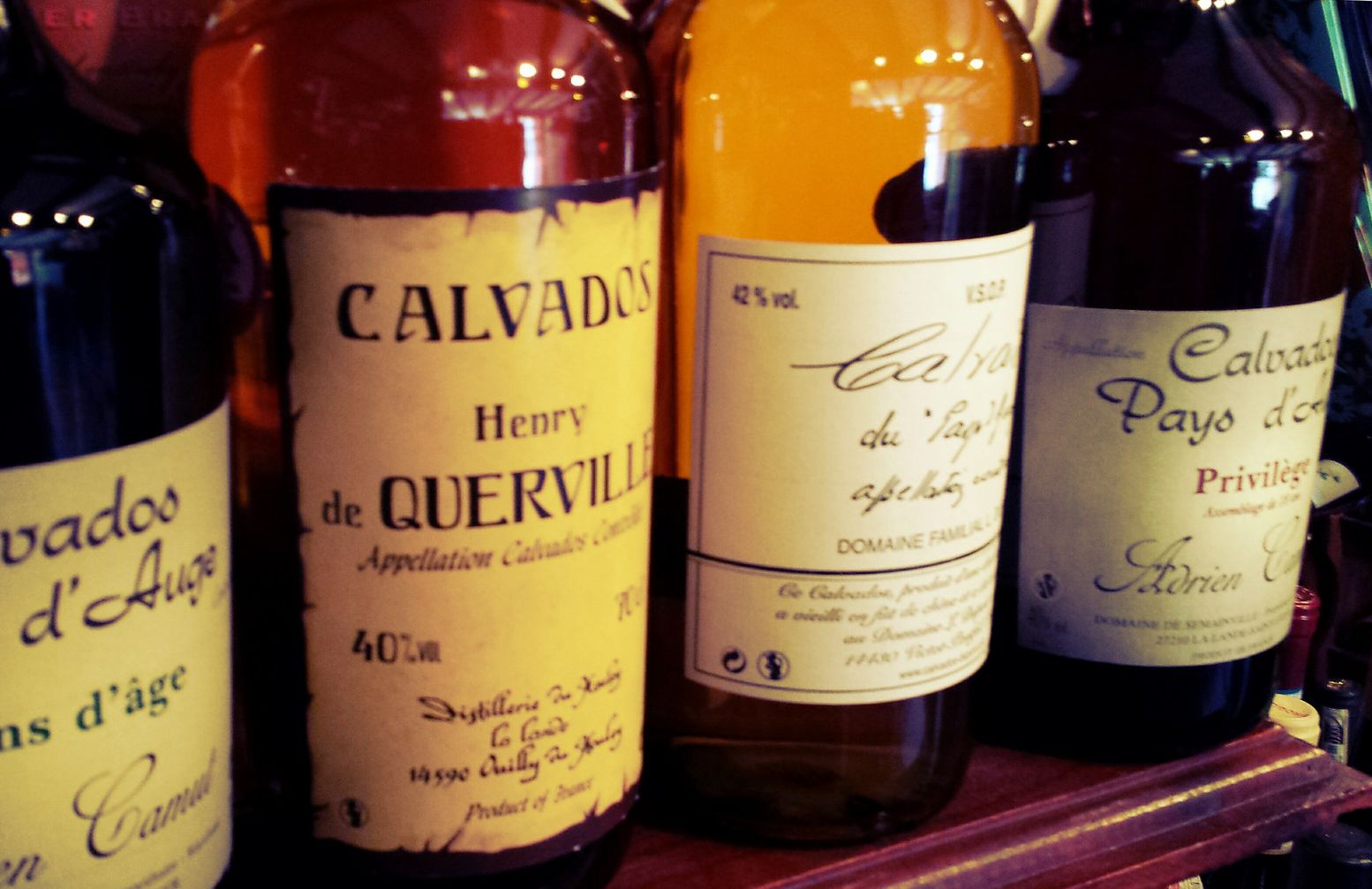
Bottles of Calvados. Image: Flickr / Dominic Lockyer
APPLE BRANDY / APPLEJACK Apple brandy or "Applejack" is, like Calvados, a brandy made from apples, except it's made in the U.S. Originally Applejack was made by repeatedly freezing hard apple cider and skimming the top to up the ABV percentage. Now, Applejack is distilled using similar methods to all of the other brandies, and is barrel aged much like Calvados. In terms of its flavor profile, Applejack has a heartier apple flavor relative to French brandies, and is a bit less refined. Some of the best apple brandies include: Laird's Apple Brandy 7 1/2 Year Old, E & J Brandy Apple ($34), Osocalis Brandy Apple Barrel Aged ($85), Lairds 12 Yr Rare Apple Brandy 750mL ($80), and Christian Brothers Apple Brandy ($16). PISCO Pisco is a pomace brandy that's made in either Peru or Chile. Because of the difference between how pisco is made in Peru and how it's made in Chile, it has a wide-ranging flavor profile. It was originally created by 16th century Spanish settlers as an alternative to orujo, a lighter, more clear brandy. In terms of the specific regulations that apply in each country, they are as follows: Peruvian Pisco Peruvian pisco can be aged for just three months in containers made of glass, metal, or another chemically inert material that doesn't affect the distillate's flavor profile. Because of this lack of flavor influence from something like an oak barrel, Peruvian pisco tastes somewhat like a vodka with hints of grape flavor. Although Peruvian piscos that use fermented mash tend to retain a lot of the original grape flavoring.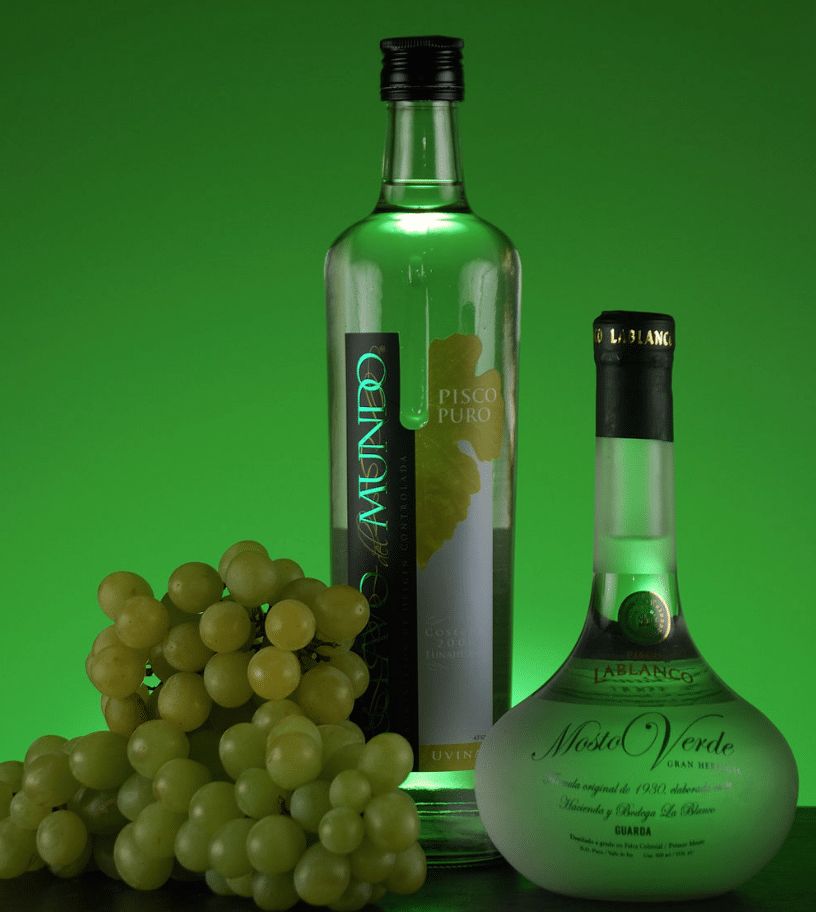
Some Peruvian pisco bottles. Image: Wikimedia / Fernando Revilla
Chilean Pisco Chilean pisco, unlike Peruvian pisco, is aged in oak barrels and also diluted before being bottled. Chilean piscos that are aged for a relatively short period of time look a lot like white rum, whereas longer-aged variants have far more color and depth of flavor. Chilean pisco tends to taste much like French and American brandies, although it usually has a stronger grape flavor.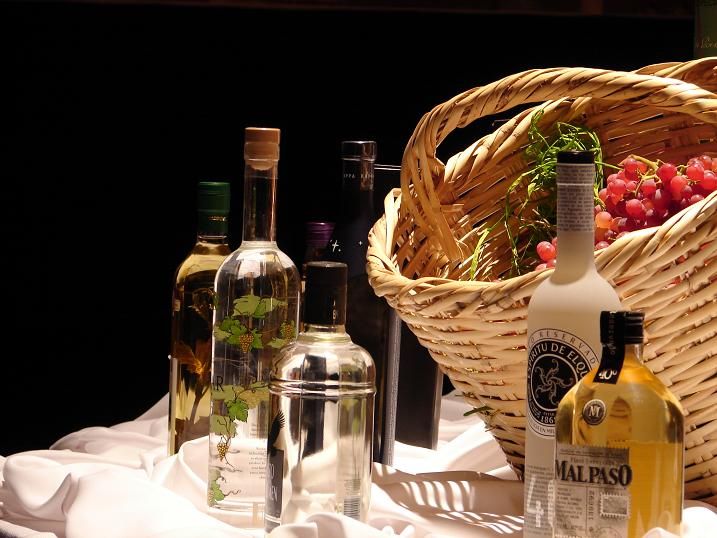
Some Chilean pisco bottles. Image: Wikimedia / Creative Commons
Some of the best Pisco brandies include: Pisco Porton ($38), Waqar Pisco ($39), Kappa Pisco ($36), ABA Pisco ($19), and Don Cesar Pisco ($38). EAUX-DE-VIE Eaux-de-vie (a French name that translates to "water of life") is a brandy with a fruit mash base that hasn't been aged. So if you wanted to make some Eaux-de-vie, you'd go through the same process as making the other brandies, except you'd skip the aging step. It's made from a range of fruits that includes everything from pears to apples to peaches to plums. Because eaux-de-vie isn't aged, it tastes a lot like a fruity vodka — which probably sounds amazing or horrible to you. The lack of aging also means that eaux-de-vie doesn't have any natural coloring (although artificial coloring is added sometimes).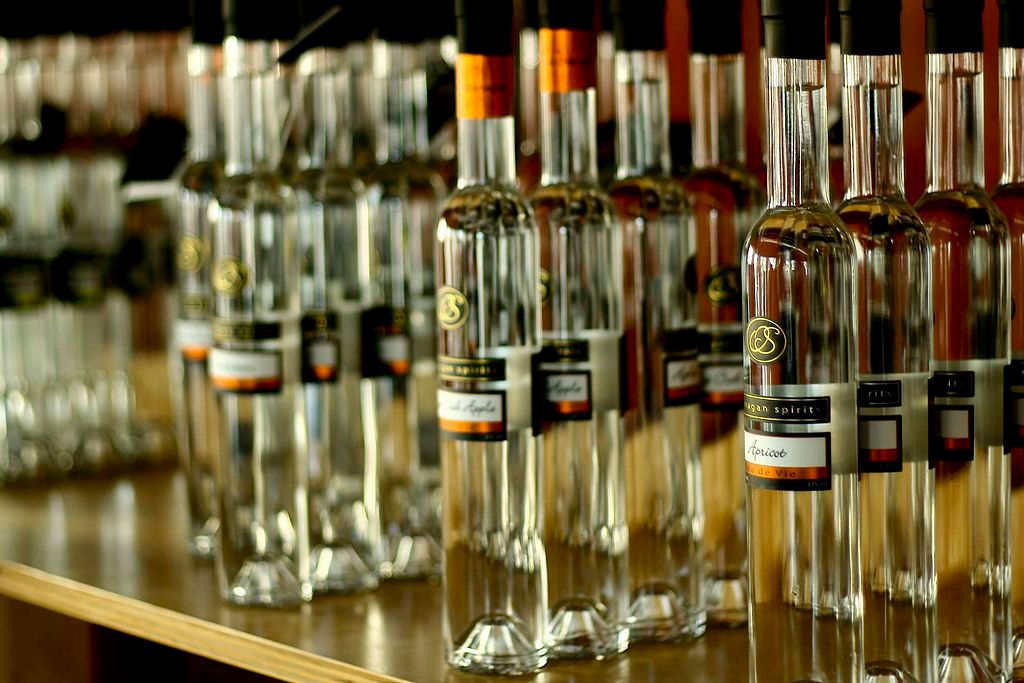
Bottles of Eaux-de-Vie. Image: Wikimedia / Paul Joseph
Some of the best Eaux-de-Vie brandies include: Clear Creek Douglas Fir Eau de Vie ($46), Williams Purkhart Pear Eau-de-Vie ($35), Remy Martin V White Cognac - 750 ml bottle ($50), Quaglia Orange Brandy ($42), and Pear Williams Purkhart Eau de Vie - 375ml ($31). GRAPPA Grappa is a brandy that's been made in Italy, the Italian portion of Switzerland, or San Marino, and is typically not aged. Because Grappa isn't aged, like eaux-de-vie, it doesn't have any natural coloring, nor flavoring from time spent in a barrel. Grappa is also made strictly from pomace — no fruit juice fermenting alongside the grape peels and all there. (As a side note, it's become more popular to age grappas.) Some of the best Grappa brandies include: Jacopo Poli di Vino Arzente Brandy ($42), Candolini Grappa Ruta - 1 L bottle ($38), Marchesi Antinori Tignanello Grappa 375 ml ($50), Nonino Lo Chardonnay Grappa ($70), Friuli-Venezia Giulia ($70), and Poli Grappa di Moscato - 750ml ($65).DIFFERENT BRANDY LABELS
Alright, let's get real pragmatic here and talk about specific brandy labeling, 'cause you're going to come across it once you get out there and start buying and drinking this stuff. Keep in mind that the following terms only apply to Cognac and Armagnac: V.O. (Very Old) means the brand has been aged for at least four years. V.S. (Very Special) means that the youngest brandy in the Cognac or Armagnac bottle has been aged for at least two years. V.S. brandy is sometimes referred to as "three stars" brandy. V.S.O.P. (Very Special/Superior Old Pale.) brandy means that the youngest brandy in the blend is either at least four years old, in the case of Cognac, or five years in the case of Armagnac.
A bottle of V.S.O.P. Cognac. Image: Flickr / djjewelz
Napoleon is a Cognac that's been aged for at least four years, or an Armagnac that's been aged for at least six. It's called "Napoleon brandy" because it was supposedly a drink that Napoleon enjoyed. X.O. (Extra Old) is "extra old" Cognac or Armagnac that has been aged for at least ten years. Varietal is when a Cognac or Armagnac is made with just one grape type; i.e. the liquor will be named after the type of grape used to make it. Vintage is a label that usually applies to Armagnac, and just means that a particular year's harvest of grapes is the only type that has gone into the bottle. Cognacs tend to be blended and thusly are usually not Vintage. Note that Vintage Armagnacs are often really expensive — north of $100.
Vintage Armagnac bottle labels. Image: Flickr / Dominic Lockyer
Hors d'Age ("Of the ages") is literally Cognac so old that it'd be "impolite to ask" about its age. These types of brandies can actually be less expensive than vintage, although that may be because brandy can lose some of its flavor after 35 years of barrel aging. Cru is a type of brandy that is grown with grapes from a very sharply distinguished area of France. So if you see Cru, that's the one term that directly applies to region of origin rather than time aged.HOW TO DRINK BRANDY / COGNAC
Now that we have tons and tons of brandy knowledge jammed into our brains, it's time to get to the fun part — actually drinking brandy. And you know how we mentioned that brandy need not be a drink for snobs? Well here we're going to teach how to drink it like a snob — 'cause sometimes it feels good to be classy, right? SIPPING IT NEAT FROM A SNIFTER If you're going for the full brandy connoisseur effect, you'll want to sip your distilled and fermented grape juice neat, from a snifter. What's a snifter? It's a footed glass with a wide bottom and a tapered top used to really savor the aromas of brandy and other liquors. The fact that the glass curves inwards at the top means that it traps aromas — in this case, brandy aromas — and allows them to be easily sucked into one's nostrils. In terms of the "neat" part of sipping brandy from a snifter, that's just a matter of pouring the brandy into the glass and not adding anything else! Except for maybe a bit of water to dilute the alcohol and reveal more of the brandy's flavor profile.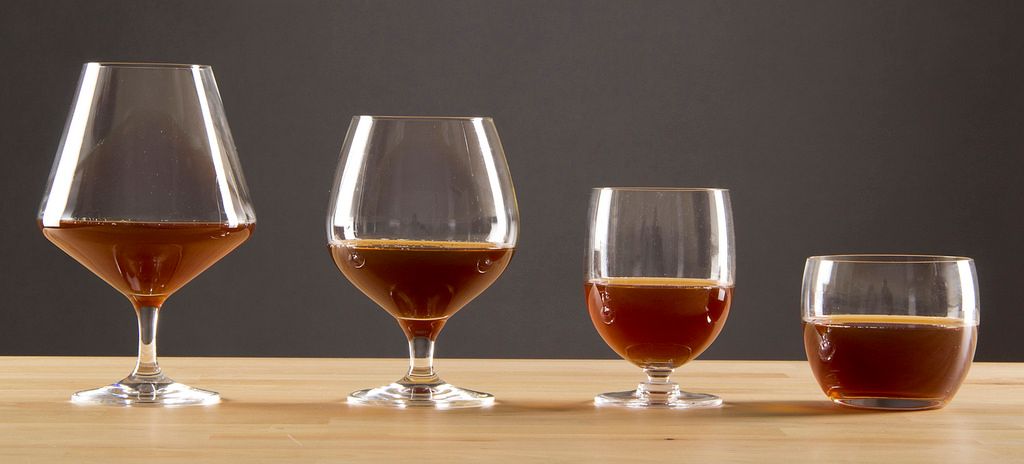 As is to be expected, sipping brandy neat from a snifter works best with a quality brandy. If you have something that's not really top shelf material, you may want to stick with pouring it into a mixed drink.
Side note: You can also serve your brandy on the rocks in a tumbler. While you hold the glass in your hand, your body heat will melt the ice and dilute the alcohol.
WARMING UP THE BRANDY
Warming your snifter is a surprising large part of your overall brandy tasting experience, so you may want to have a stove, some hot water, or your hands nice and... handy.
According to the pros, warming up the snifter, and thusly the brandy, allows the full flavor profile of the liquor to be revealed. (You probably already know that cooling liquor inhibits the smell and taste.) To do this, you can 1. Let the snifter sit in your hand in order to allow your body heat to warm up the glass (mentioned above). 2. Hold your snifter of brandy close — but not that close! — to a stove's open flame. 3. Pour and pour out warm water in the snifter and then place the brandy inside of the glass. Also, don't swirl the brandy in an attempt to heat it up, it's possible this could negatively affect the drink's subtle aromas.
https://giphy.com/embed/A1ZXwMoxsdBhm
Although it may sound counterintuitive, if you're sipping on a flight of brandies of all different ages, you'll want to go from the youngest brandy to the oldest. This will allow you to prime your palate for the good stuff, as well as lessen the chance of over-drinking the good stuff. Remember to leave a little bit of each of the brandies in the glasses so you can go back to them and try them again with an updated palate.
Side note: Try not to look at the cost or the type when you're tasting brandies — you want to go in blind to ensure you're not being inflicted with the placebo effect.
HAVING IT IN A COCKTAIL
For many of you, having brandy in a cocktail will be your go-to choice for sipping on this fine, classy spirit. And there's good news and bad news here. The good news is: cheap brandies are perfect for mixing into cocktails. The bad news is: Most cocktails will mask the flavors of a finer brandy. So as a general rule of thumb, you'll want to sip on your finer brandies, and mix your cheaper ones.
As far as mixing tips, you'll probably just want to stay away from any type of carbonated mixer as brandy is still a wine derivative, and the flavors usually won't go well together at all.
For some of the best brandy cocktail recipes out there, check out the Popular Brandy Drink Recipes and Favorite Brandy Drink sections below.
As is to be expected, sipping brandy neat from a snifter works best with a quality brandy. If you have something that's not really top shelf material, you may want to stick with pouring it into a mixed drink.
Side note: You can also serve your brandy on the rocks in a tumbler. While you hold the glass in your hand, your body heat will melt the ice and dilute the alcohol.
WARMING UP THE BRANDY
Warming your snifter is a surprising large part of your overall brandy tasting experience, so you may want to have a stove, some hot water, or your hands nice and... handy.
According to the pros, warming up the snifter, and thusly the brandy, allows the full flavor profile of the liquor to be revealed. (You probably already know that cooling liquor inhibits the smell and taste.) To do this, you can 1. Let the snifter sit in your hand in order to allow your body heat to warm up the glass (mentioned above). 2. Hold your snifter of brandy close — but not that close! — to a stove's open flame. 3. Pour and pour out warm water in the snifter and then place the brandy inside of the glass. Also, don't swirl the brandy in an attempt to heat it up, it's possible this could negatively affect the drink's subtle aromas.
https://giphy.com/embed/A1ZXwMoxsdBhm
Although it may sound counterintuitive, if you're sipping on a flight of brandies of all different ages, you'll want to go from the youngest brandy to the oldest. This will allow you to prime your palate for the good stuff, as well as lessen the chance of over-drinking the good stuff. Remember to leave a little bit of each of the brandies in the glasses so you can go back to them and try them again with an updated palate.
Side note: Try not to look at the cost or the type when you're tasting brandies — you want to go in blind to ensure you're not being inflicted with the placebo effect.
HAVING IT IN A COCKTAIL
For many of you, having brandy in a cocktail will be your go-to choice for sipping on this fine, classy spirit. And there's good news and bad news here. The good news is: cheap brandies are perfect for mixing into cocktails. The bad news is: Most cocktails will mask the flavors of a finer brandy. So as a general rule of thumb, you'll want to sip on your finer brandies, and mix your cheaper ones.
As far as mixing tips, you'll probably just want to stay away from any type of carbonated mixer as brandy is still a wine derivative, and the flavors usually won't go well together at all.
For some of the best brandy cocktail recipes out there, check out the Popular Brandy Drink Recipes and Favorite Brandy Drink sections below.
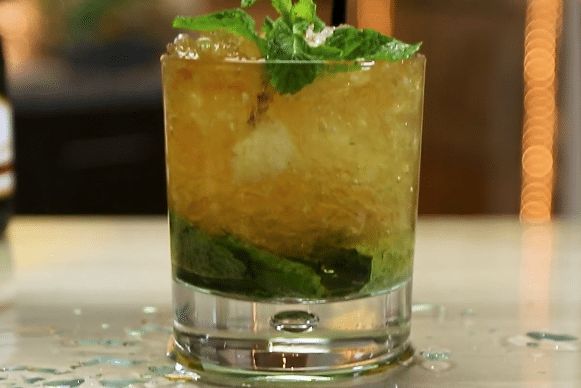
The Champagne Julep, a popular brandy cocktail. Image: Tipsy Bartender
PAIRING BRANDY WITH FOOD Because brandy is so often sipped with a fine cigar, often as an after-dinner digestif, it's often drunk alongside small snack foods. These snack foods range from aged parmesan cheeses to pure dark chocolates to dried apricots to licorice. It all depends on the type of brandy, as you'll want to have snack flavors that compliment the flavor profile of whatever brand you're sipping on.POPULAR BRANDY DRINK RECIPES
1. SIDE CARHOW TO STORE BRANDY
Storing brandy is a pretty simple endeavor, but you'll still want to pay attention to a few particular details and nuances that can have significant influence on your brandy's flavor. Specific tips are listed below: 1. Make sure to store your brandy in a dark, dry place. This is the case with most liquors, but it's especially true for brandy, as that stuff can get real expensive and you don't want sunlight or heat evaporating it from the bottle. 2. Make sure you store your brandies upright, and whatever happens, don't let that cork touch the brandy inside of the bottle. As Hellerman House notes, "It is crucial that the liquid does not touch the cork when storing, as the accumulation of sugars around the cork will infuse the brandy with flavours of the cork." 3. Store your brandy in a glass container. Yes, your brandy probably already came in a glass container, so this shouldn't be an issue, but in case you're thinking about storing it anything else, just... don't. Something like plastic will be degraded by the alcohol (remember it's a great solvent), and that will affect the taste of the brandy. 4. If you want to go real deep on proper brandy storage, you can even decant it in a smaller container than what it came in in order to achieve a better air to liquor ratio. (Air will oxidize the brandy, thusly negatively affecting its flavor profile.)THE FUTURE OF BRANDY
Like all the other spirit markets, it seems that brandy is undergoing somewhat of a renaissance, although it's unclear how renaissance-y this renaissance is going to be. What does that mean? It means that brandies — especially Cognac — are increasing in popularity in most of the big liquor markets in the world. There are caveats here, however. China, for example, Cognac's biggest market in terms of dollars (rather than volume) seems to be struggling a bit. But Cognac producers like Hennessy have taken notice of this stagnation and are ramping up marketing campaigns to try and keep their products at the forefront of the foreign spirits offerings. To better understand these trends, let's take a quick dive into each one. https://giphy.com/embed/1NynhacCahTZ6 In a 2017 article titled "Cognac set for future growth, with China and the US as engines," just-drinks noted that "China... remains the largest Cognac destination by value despite a recent slump following the Government's anti-extravagance drive...." The article goes on to say that "[Cognac] will continue to recover, with growth accelerating in a few years' time." On a related note, The Spirits Business said in a 2018 article that "shipments [of Cognac] to the Far East (South Korea, Hong Kong, Malaysia, Singapore, Taiwan, Thailand, China, Japan) reached 60.9 million bottles, representing an increase of 13.5% in volume and 12.4% in value. China led this growth with nearly 26.2 million bottles shipped to the country during the 12 month campaign." Despite this apparent growth, however, the picture in China isn't all rosy. A 2018 Jing Daily article focusing on Hennessy's growth strategy noted that there was "an industry-wide slump throughout Asia a few years ago," and that "the value of cognac imports in China peaked at $7.8 billion in 2012 only to crash by 36 percent three years after the country’s state-sponsored clampdown on conspicuous consumption and gift-giving in 2014." But Hennessy's new marketing campaigns seem to be working, at least to some extent, with annual revenue for the Hennessy brand in China reaching $1.552 billion, a 9% increase year over year. So what is Hennessy's growth strategy exactly? It's all about Cognac and food. BRANDY AS A MEALTIME DRINK When you think of brandy — specifically Cognac — you probably think of sipping on the spirit solo. Not solo as in you being alone, but solo as in it's not accompanied by a real, full meal. That's probably going to change in the near-term future, however, as large producers aim to position brandy as a drink that can be enjoyed with a meal, rather than just after it.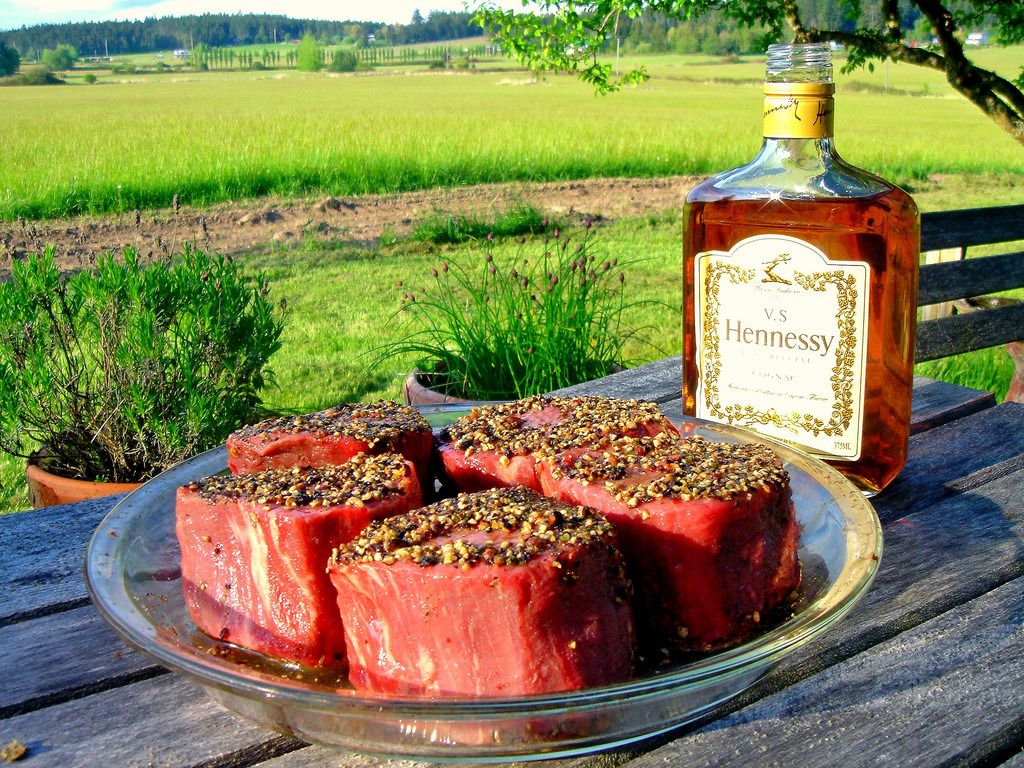
Cognac and a soon-to-be-cooked meal. Image: Flickr / gemteck1
As mentioned above, Hennessy is launching a mealtime Cognac marketing campaign in China, dubbed "Hennessy & Meal," with a focus on making it popular to pair their Cognac with food. Other corporations are also doing the same thing, with the Jing Daily article mentioned above noting that "Hennessy’s competitor, Pernod Ricard Martell, saw its China market share reach 44 percent by volume in 2017. Martell introduced their own wine-and-dine concept in 2013 and worked closely with the Michelin-rated Chinese restaurant Da Dong to come up with new ways to pair Chinese meals with their French cognac." The article went on to note that "The brand even produced a documentary on Da Dong’s well-known chef this year as a way to inspire the consumers to create their very own Martell-paired dishes." Although there isn't as much evidence for brandy and meals becoming a trend in other parts of the world in the news, it's definitely happening. For example, The South African noted in a 2014 article titled "Lose the wine, Brandy pairings are all the rage," that "A good brandy can compliment a meal, set off flavours and set up a conversation on your palate that enhances both food and drinks." And while this may seem a bit esoteric, keep in mind that South Africa is one of Cognac's largest emerging markets. BRANDY'S FUTURE IN NORTH AMERICA While China may be the largest brandy market in the world in terms of dollars (again, with most of that being Cognac), America is the largest in terms of volume — meaning Americans spend less but drink more. 'Merica! right? A 2015 Eater article noted that "According to the latest statistics from DISCUS (the Distilled Spirits Council of the United States), in 2013 there were 11.1 million 9-liter cases of brandy sold in the United States, up 15 percent from 2002, with the super premium category leading the charge, up 54.3 percent. That's more brandy sold annually than gin, at 10 million cases, and Scotch, at 9.43 million cases." Patrick Raguenaud, president of the Bureau National Interprofessional du Cognac (BNIC) told the Drinks Business in a 2018 article that "'The dark spirits category is growing in the US market, encouraged by the historical presence of cognac and the constant investments of the cognac houses,'" and that "'This is ensuring that shipments towards the US continue to grow year on year.'"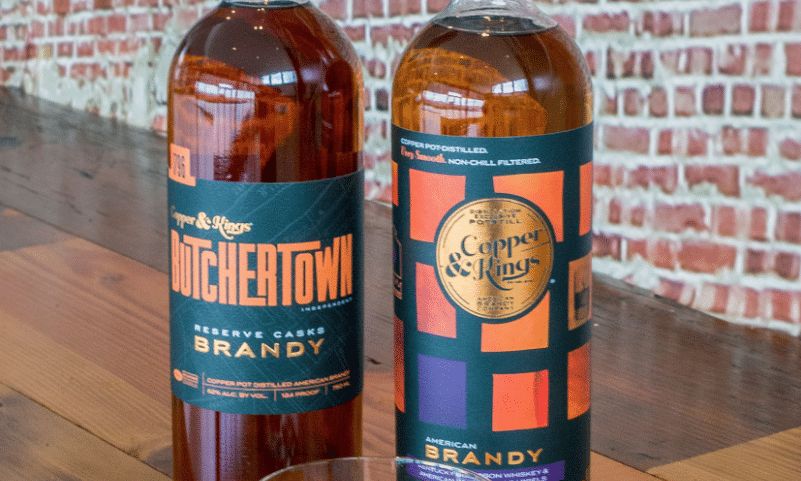
American craft brandies. Image: Wikimedia / Cdb272
Aside from general growth of the brandy market in the U.S. — more specifically, the Cognac market — there are also seems to be a rising and thriving craft distillery movement. As a 2016 Chicago Tribune article noted, "There are now 940 craft distilleries in the country, 170 of which are producing brandy, according to the American Distilling Institute." On that same note, a 2017 New York Times article noted that "[experimental] freedom is drawing craft distillers who feel crowded out of the whiskey market and, at the same time, see an opportunity to remake American brandy as something other than a syrupy-sweet concoction." The Times article added that "[Brandy] is also increasingly popular with bartenders," with the new generation of American brandies avoiding the high cost of Cognac as well as the overly sweet flavor profile of mass-produced American brandy. So to sum up the future of brandy in the U.S.: trends point toward a growing market, especially among craft brandies. Although big producers definitely aren't going anywhere, and will likely push to stay in the game with premium lines that appeal to millennials who love cocktails.FIVE OF OUR FAVORITE BRANDY DRINKS
1. ALLURE'S WAY 2. BLUE VELVET
2. BLUE VELVET
 3. CHAI IT ON TOP
3. CHAI IT ON TOP
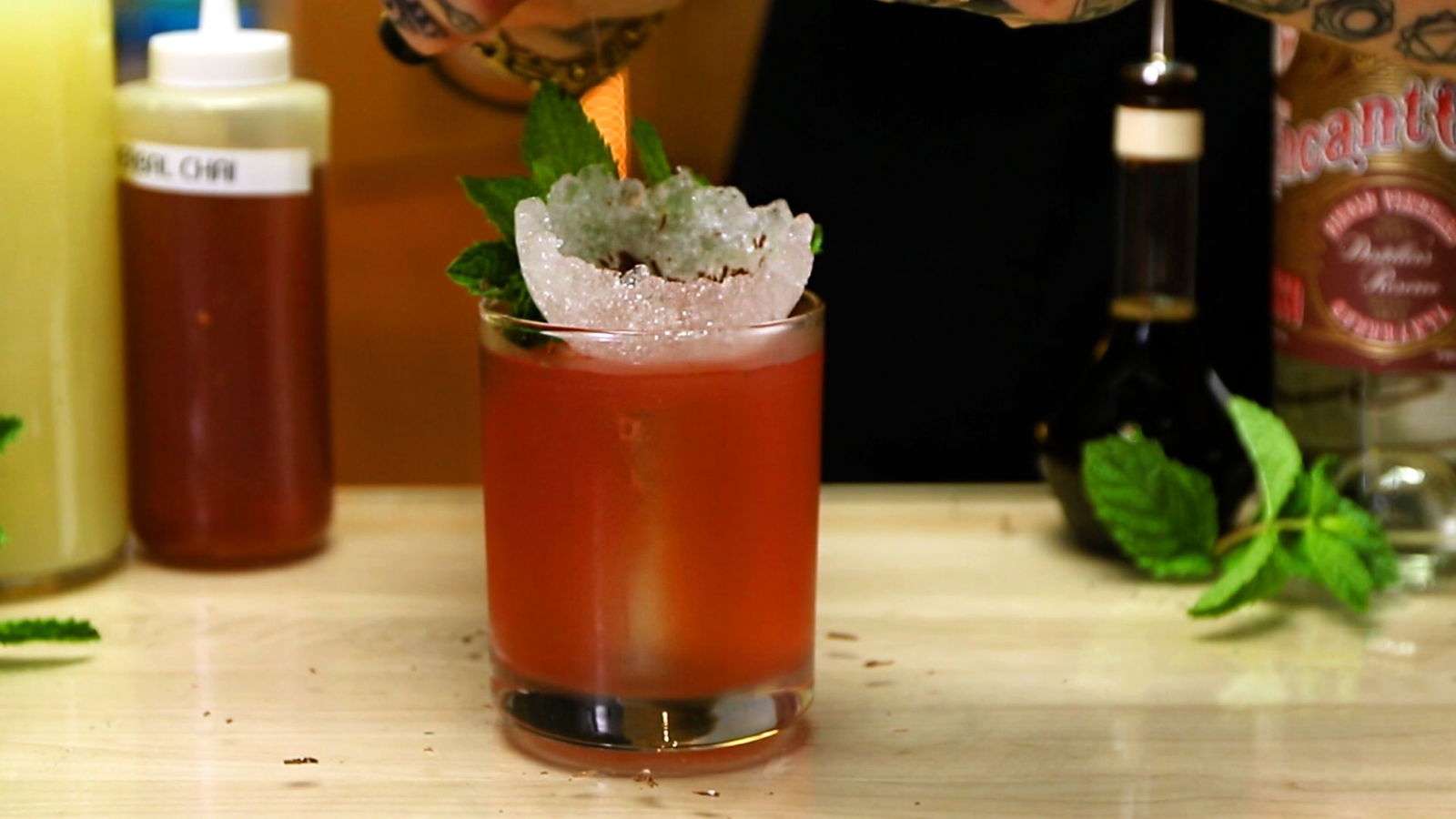 4. CLASSIC SANGRIA
4. CLASSIC SANGRIA
 5. ECHO PARK
5. ECHO PARK
 6. FROZEN BRANDY ALEXANDER
6. FROZEN BRANDY ALEXANDER
 7. MULLED WINE
7. MULLED WINE
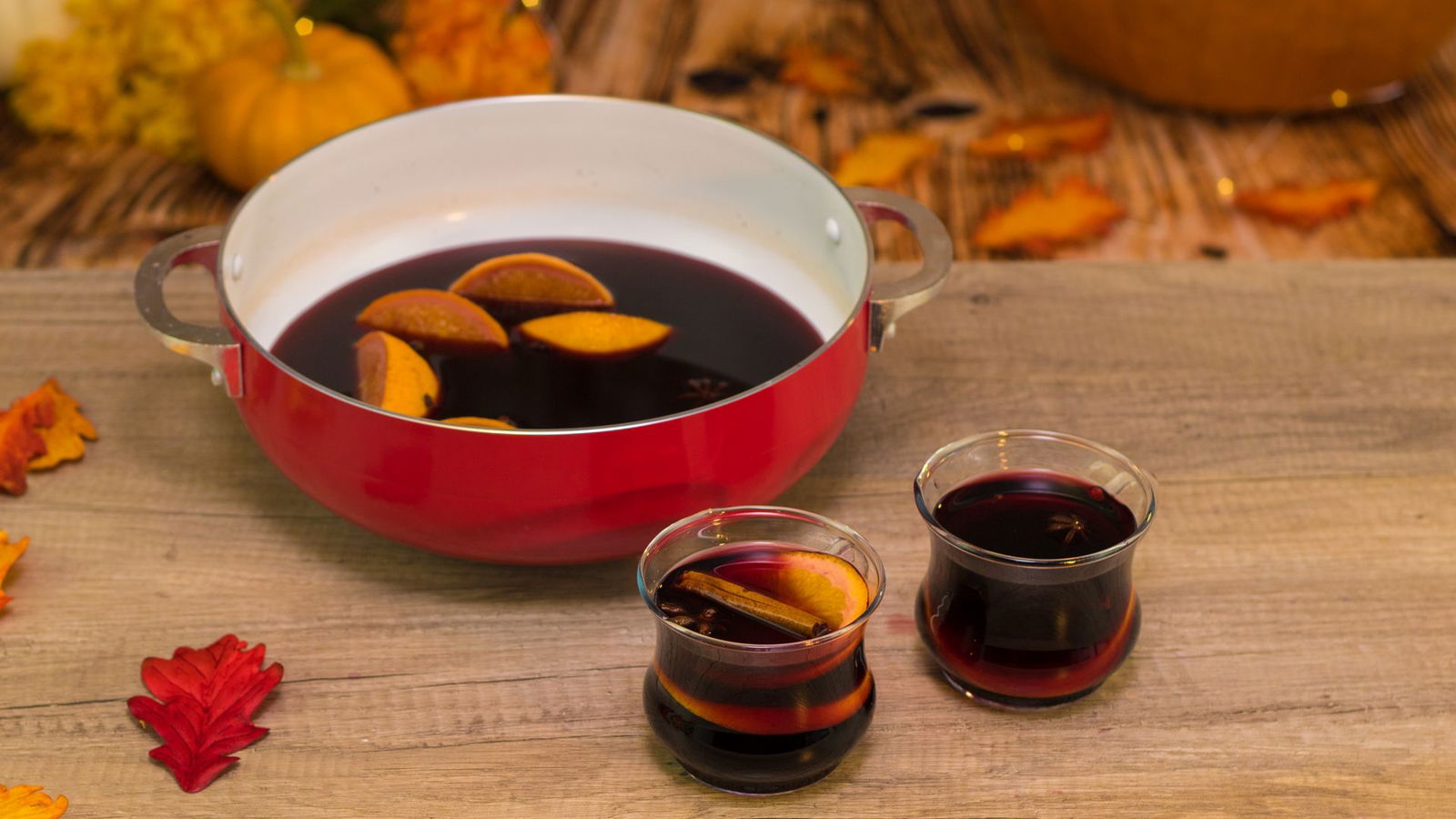 8. TIME FOR TEA
8. TIME FOR TEA
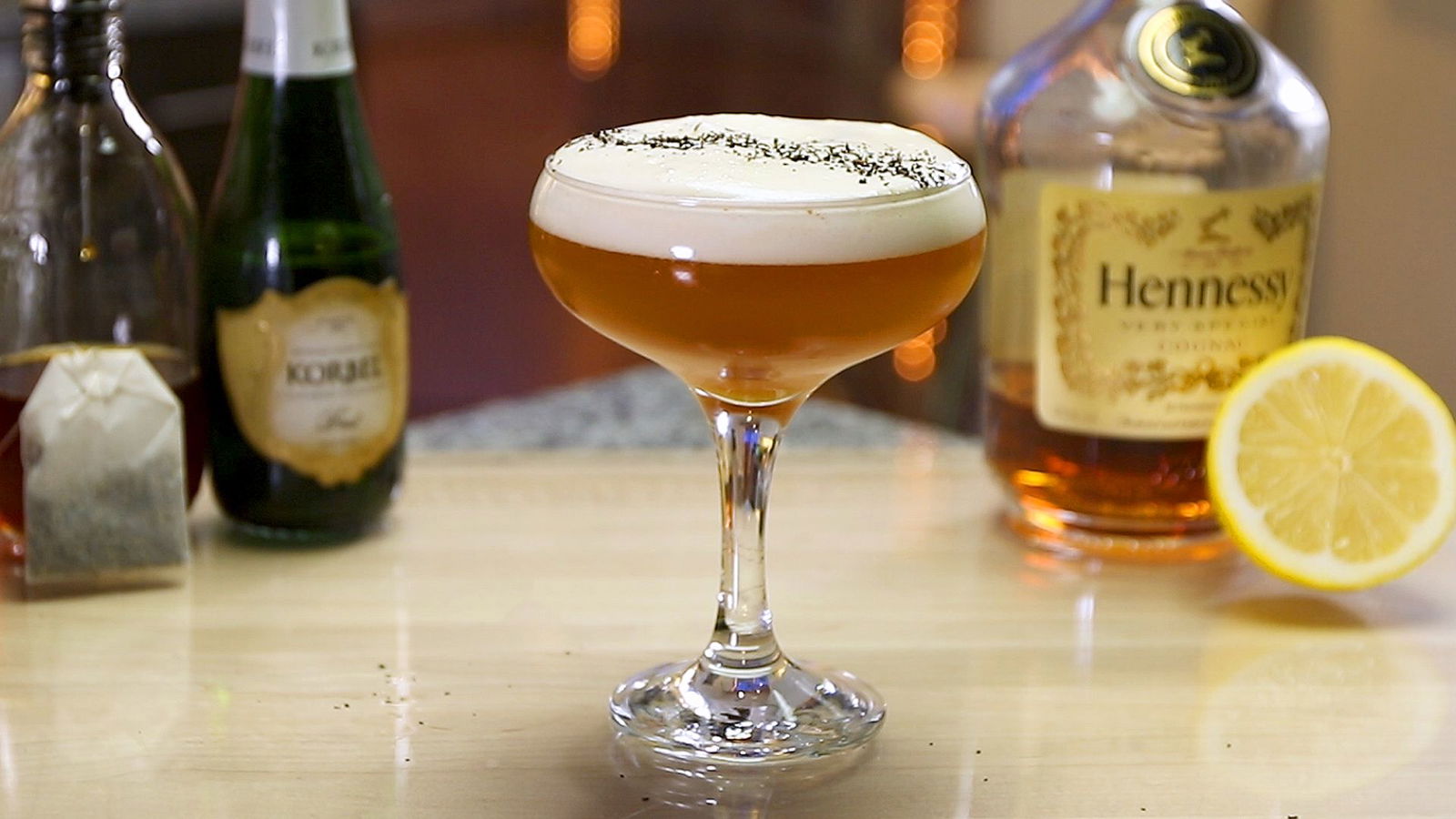
GIFS: Giphy

Independence Day Drinks
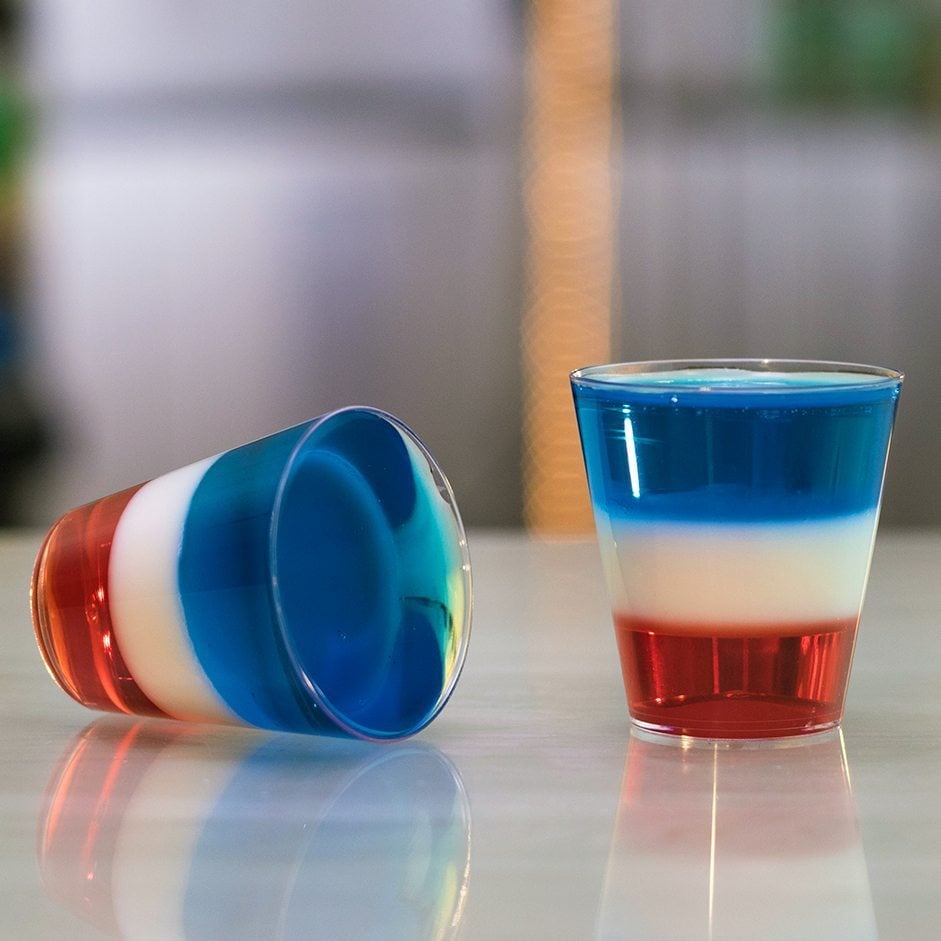
4th Of July All American Jello Shots

4th Of July Cake Vodka Milkshake

4th Of July Diversity Bomb Shot
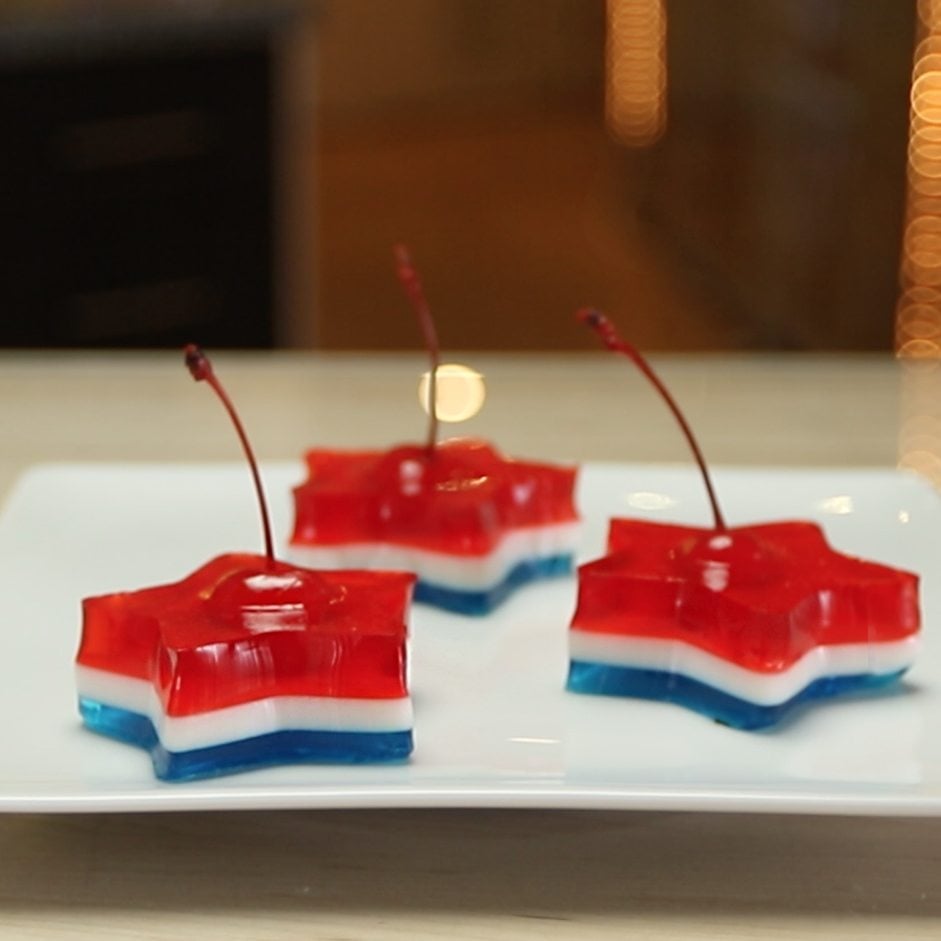
4th Of July Jello Shots
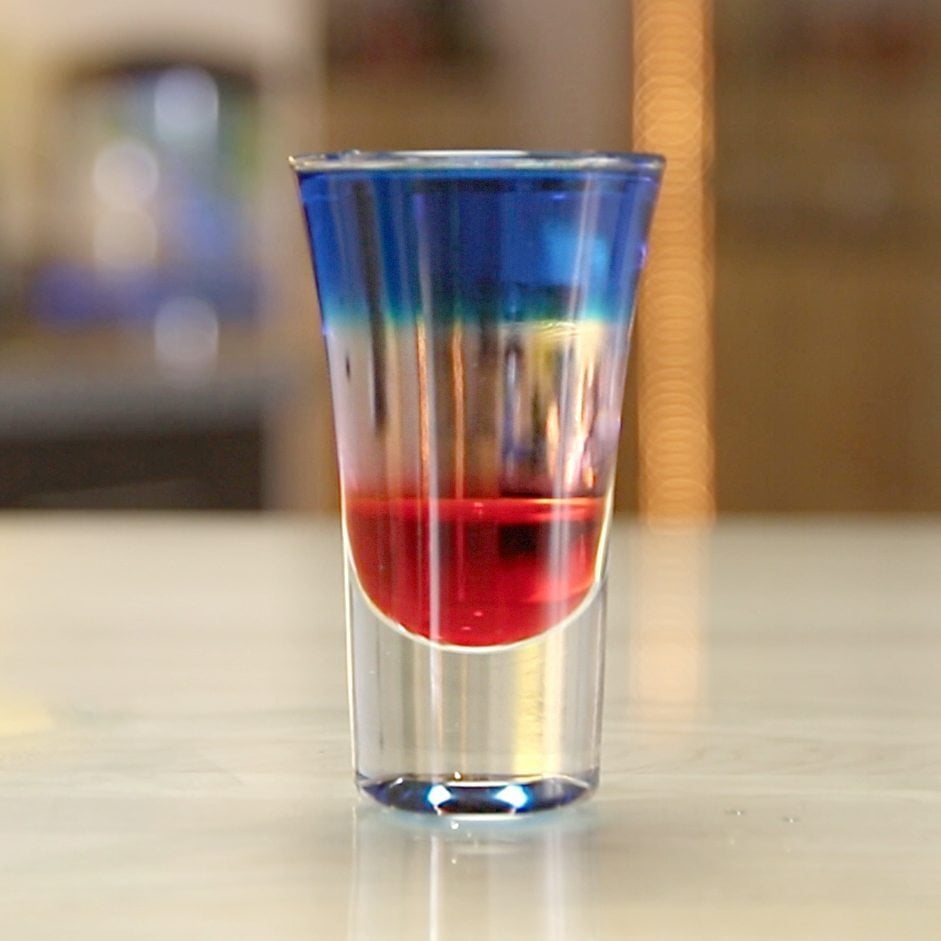
4th Of July Layered Shots
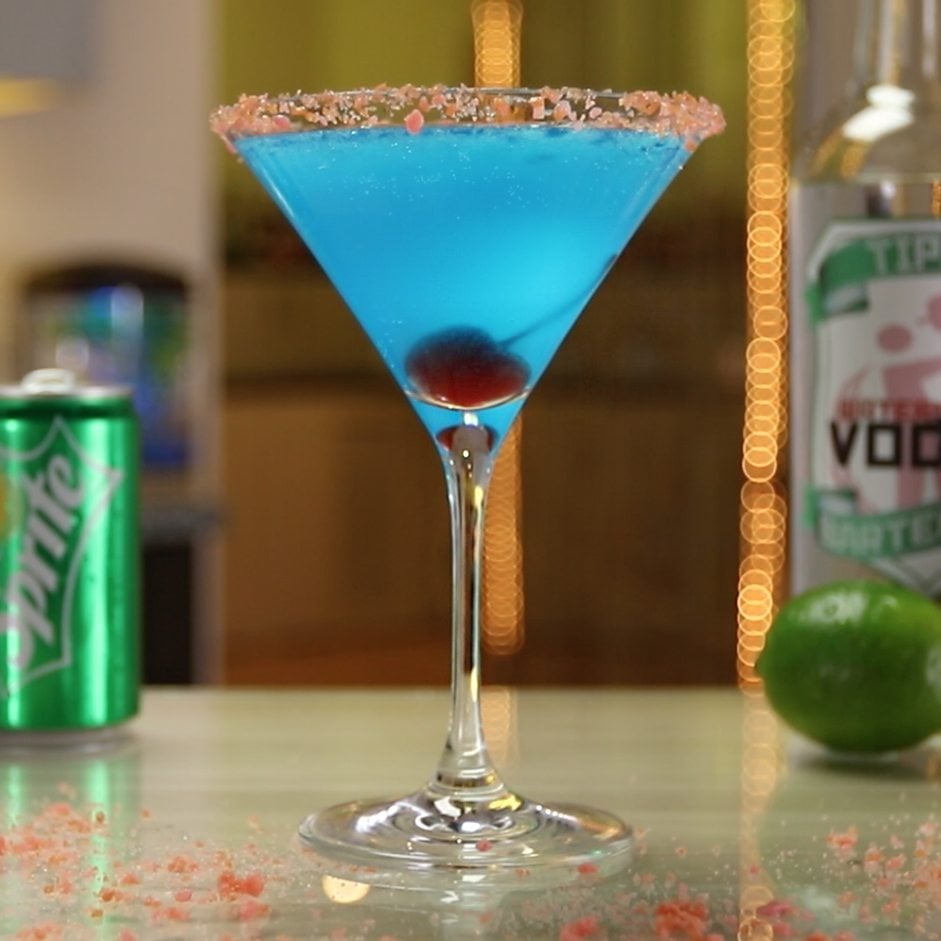
4th Of July Pop Rocks Martini
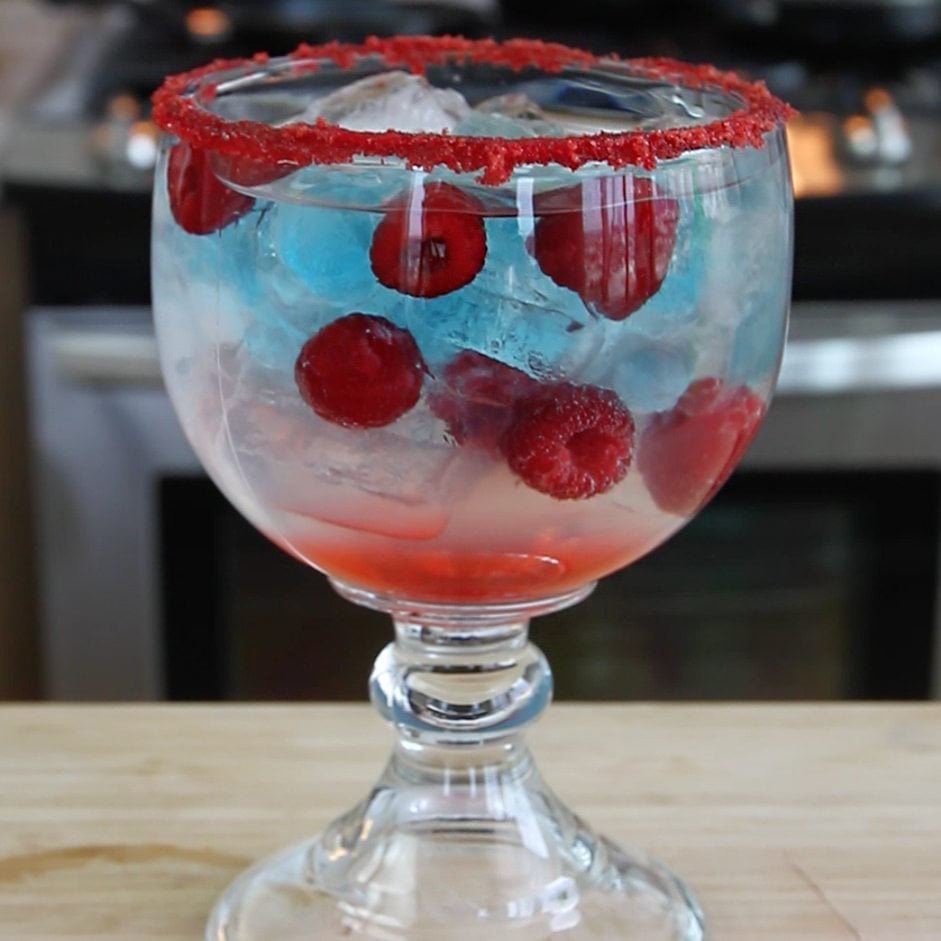
4th Of July Raspberry America
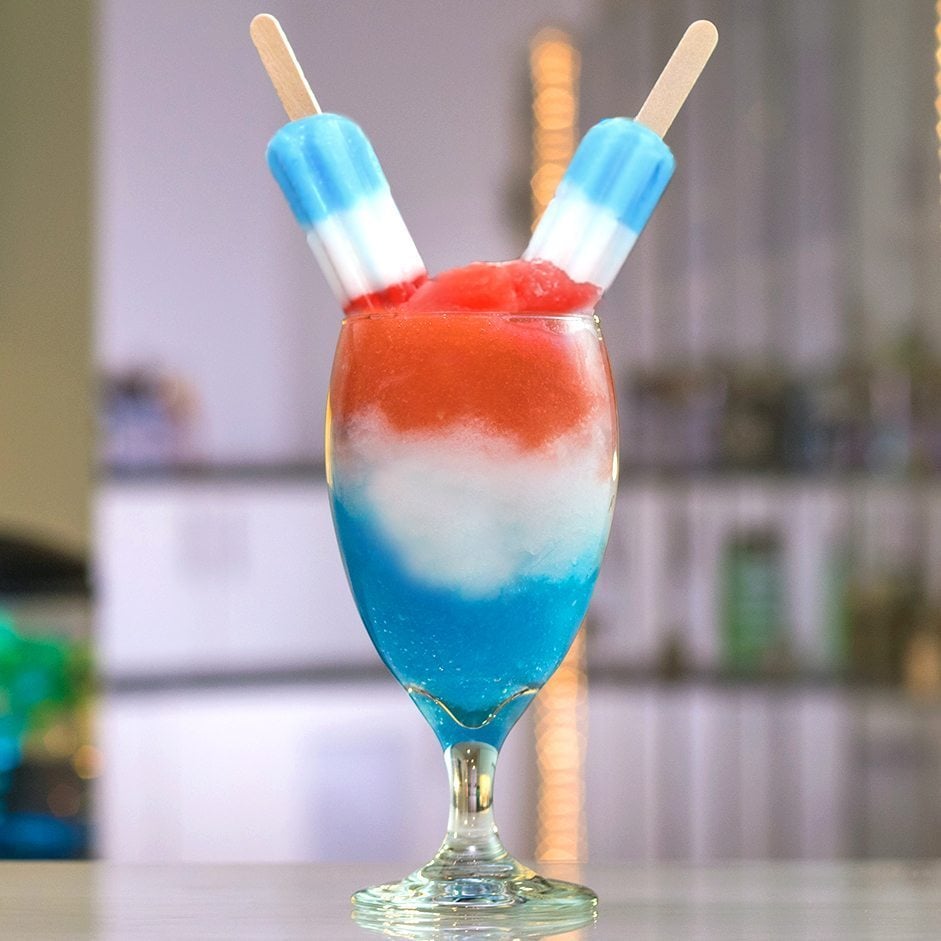
4th Of July Spiked Bomb Pops
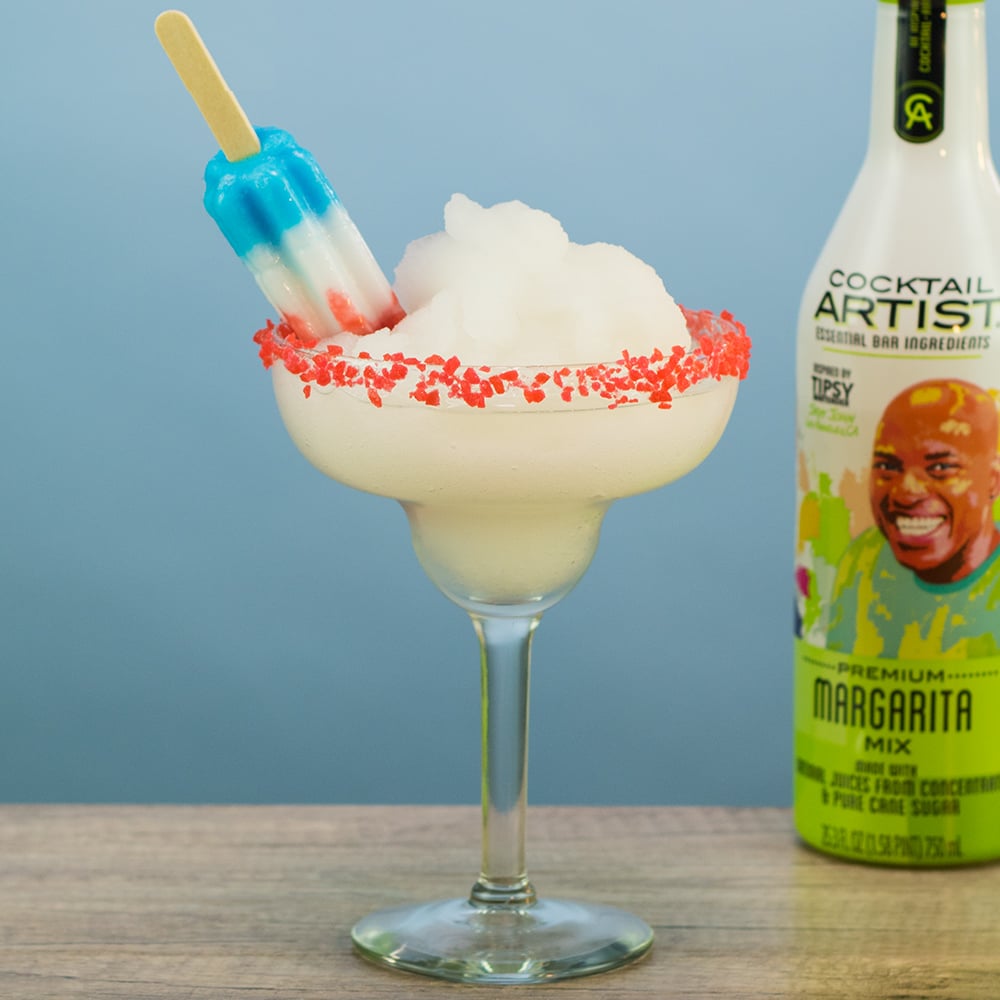
4th July Popsicle Margarita
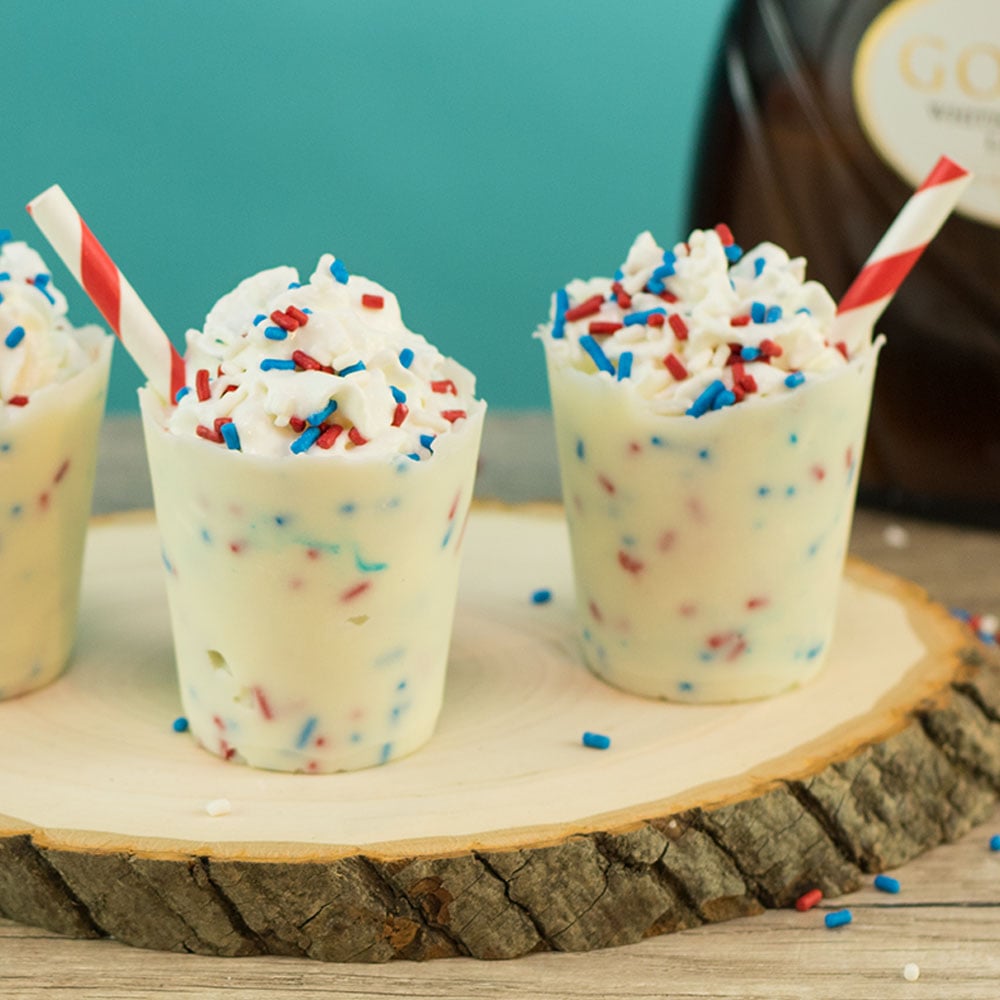
4th July Edible Shot Glasses
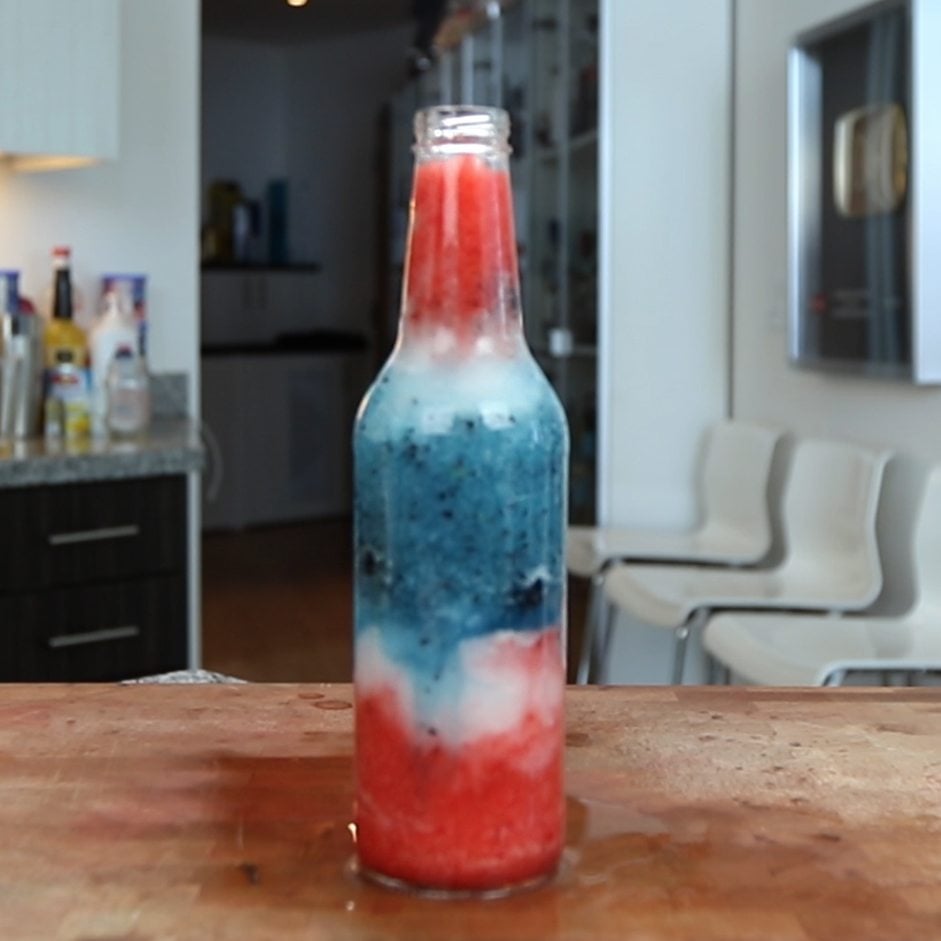
4th July In A Bottle
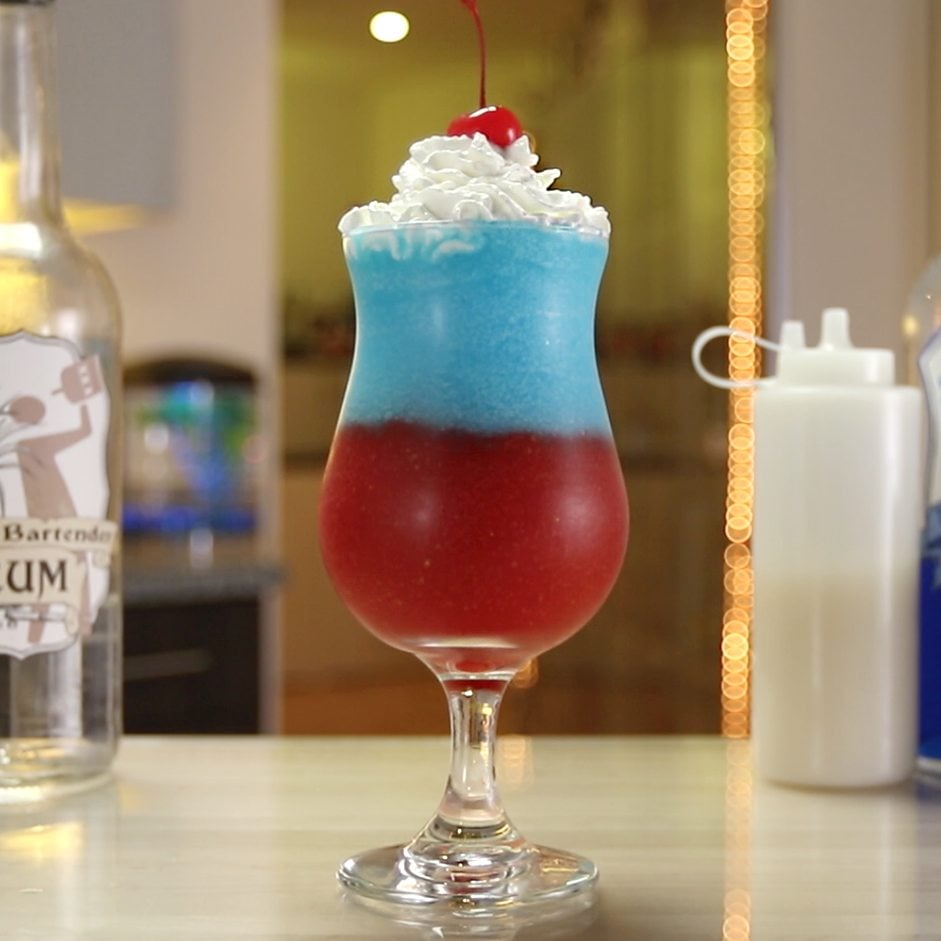
All American Daiquiri













